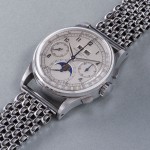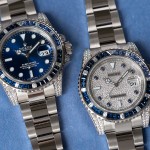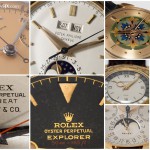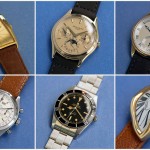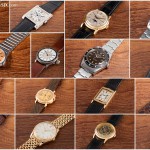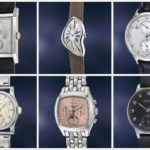Highlights: Phillips Geneva Watch Auction
The elegant and unusual.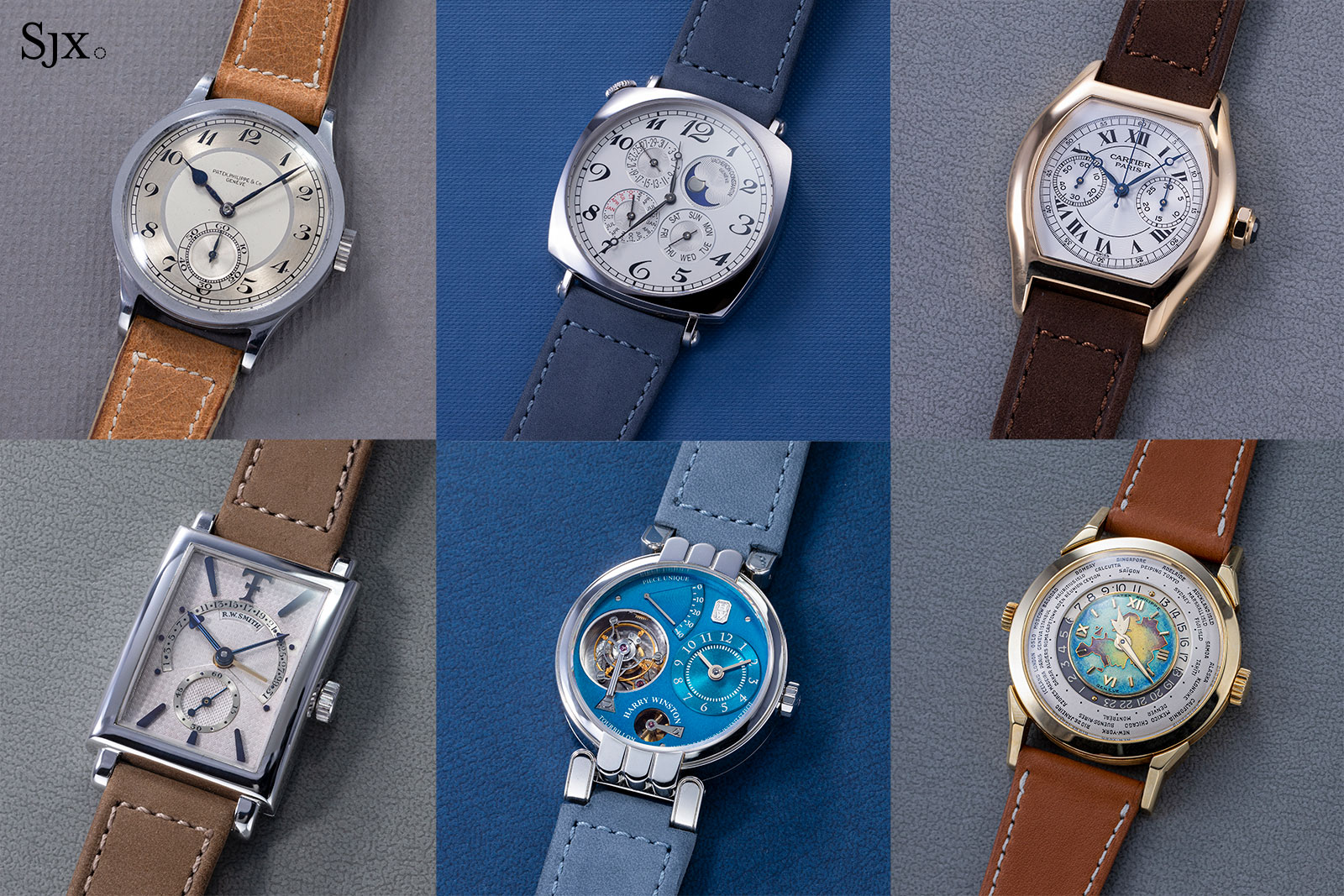
Kicking off the spring-season watch auctions, the upcoming Phillips sale in Geneva takes place over the weekend of May 8 and 9. Led by the Patek Philippe ref. 2523 cloisonné world time “Eurasia”, the 236-lot catalogue has clearly been curated to cater to the taste of contemporary collectors.
We round up a few interesting lots from the sale, including a pair of obscure watches by famed independent watchmakers – the Harry Winston Opus 1 by F.P. Journe, and the Roger W. Smith Series 1 “Onely” for Theo Fennell. Perhaps as unusual, but this time from an establishment name, is the Vacheron Constantin American 1921 Perpetual Calendar.
And then there’s the Patek Philippe Calatrava ref. 570 with a two-tone dial and Breguet numerals, which is simply gorgeous.
The Geneva Watch Auction: XIII takes place on May 8 (for lots 1-130) and May 9 (lots 131-236). The full catalogue and registration for bidding are available online.
Lots 57 and 89 – Cartier Tortue monopoussoir chronographs
Enjoying a resurgent interest in its elegant but original designs, bringing to mind its 1990s heyday at auction, Cartier is now frequently encountered in watch auctions. And the two present examples of the Tortue are each interesting, but even more notable side by side in the same same. They are the same watch – the original from 1930 and the remake some seven decades on.
Tortue, French for” turtle”, is a century-old design attributed to Cartier, having made its debut in 1912. It’s aesthetic durability is self-explanatory, but the highlight with this pair is the added complication – the monopoussoir, or mono-pusher, chronograph.
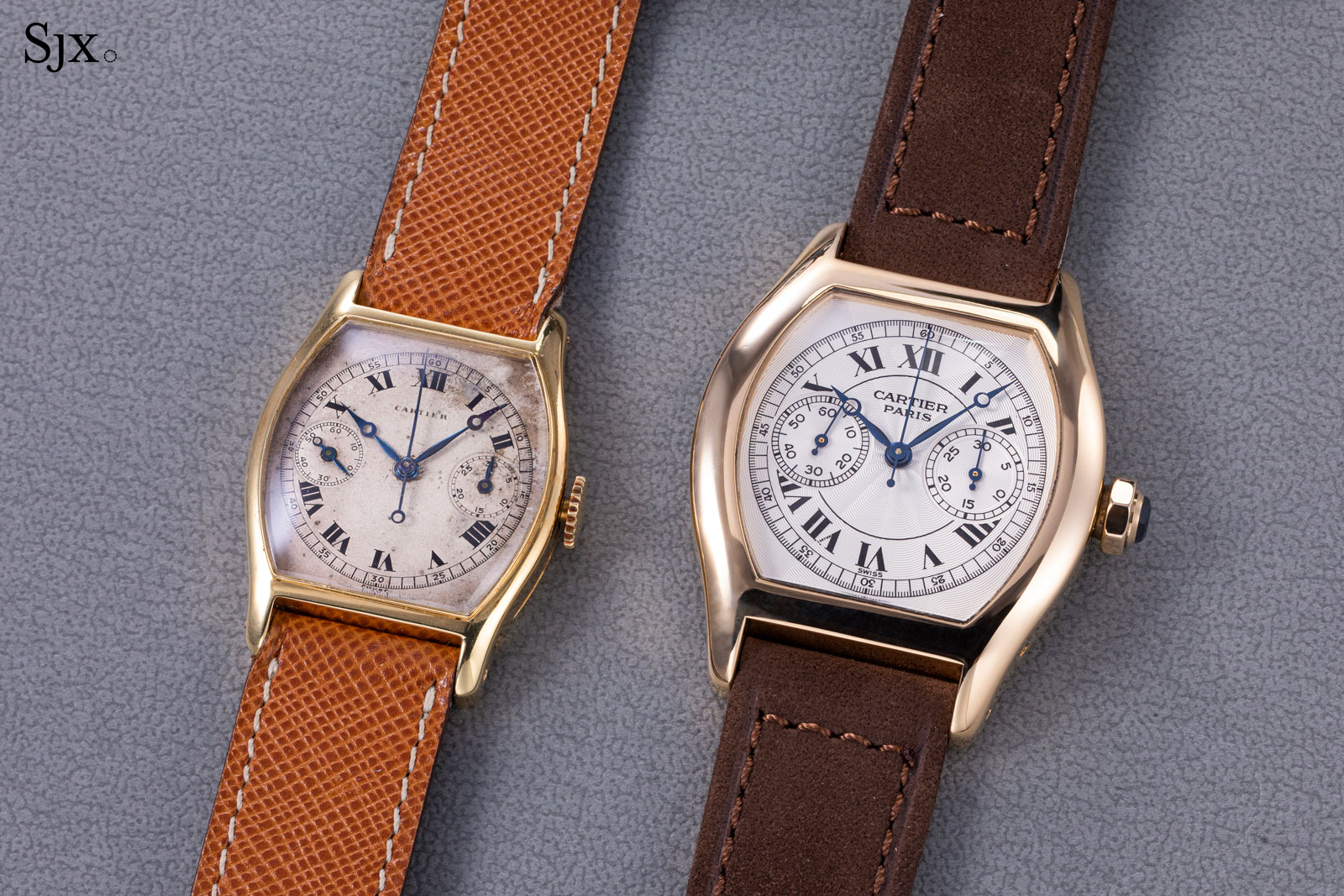
The vintage original (left) and the modern-day CPCP version
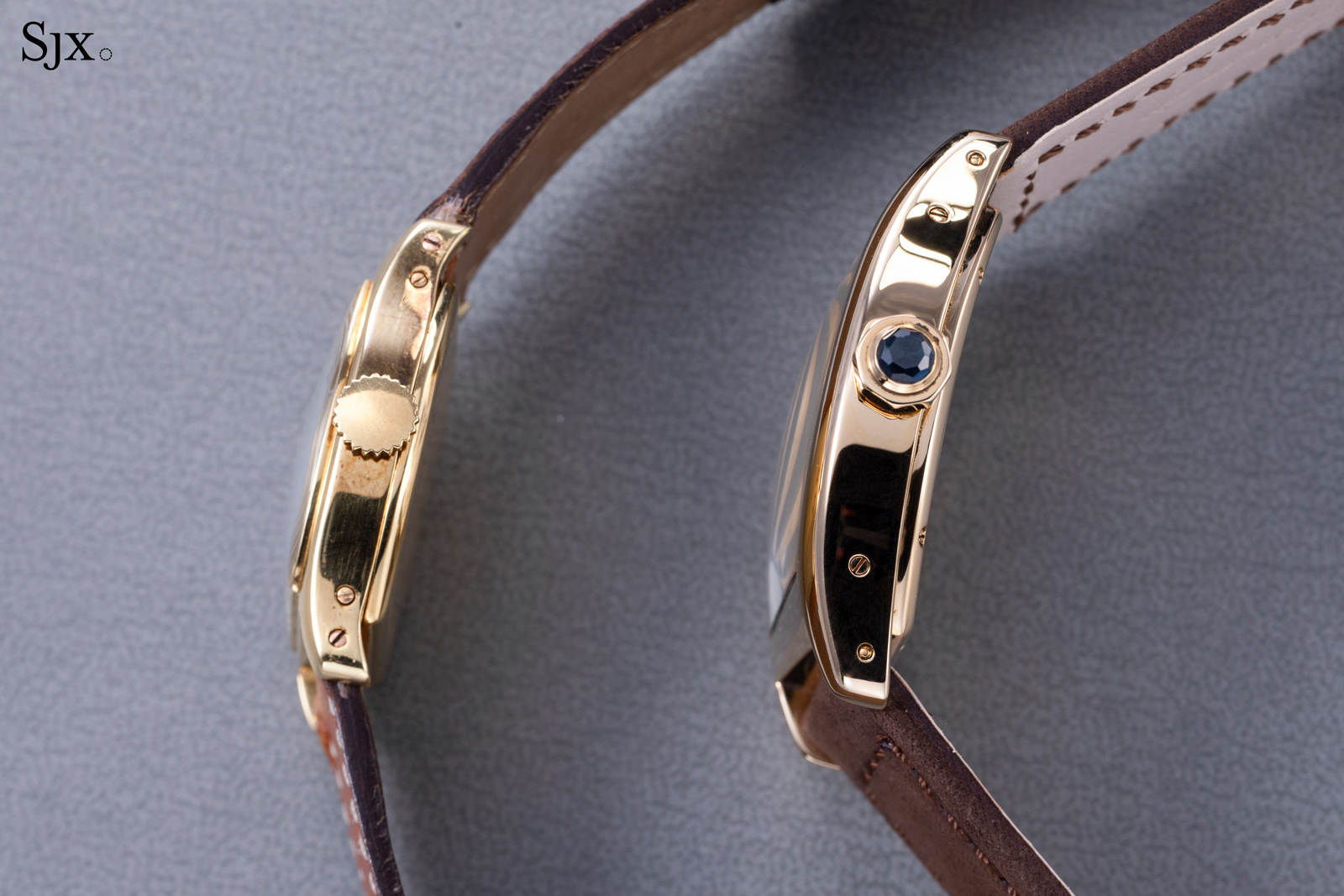
All chronograph actions are controlled via the crown, explaining why the usual pushers are absent
The two examples are from different eras, with telltale differences in size, layout, and of course condition. The vintage version dates to 1930 – the model was introduced in 1927 – while the modern version was from the Collection Privé Cartier Paris (CPCP), a high-end line introduced in 1998.
It is obvious that the CPCP model is far larger, despite being a compact watch by modern standards. And the dial has the chronograph counters closer to the centre, like many contemporary watches.
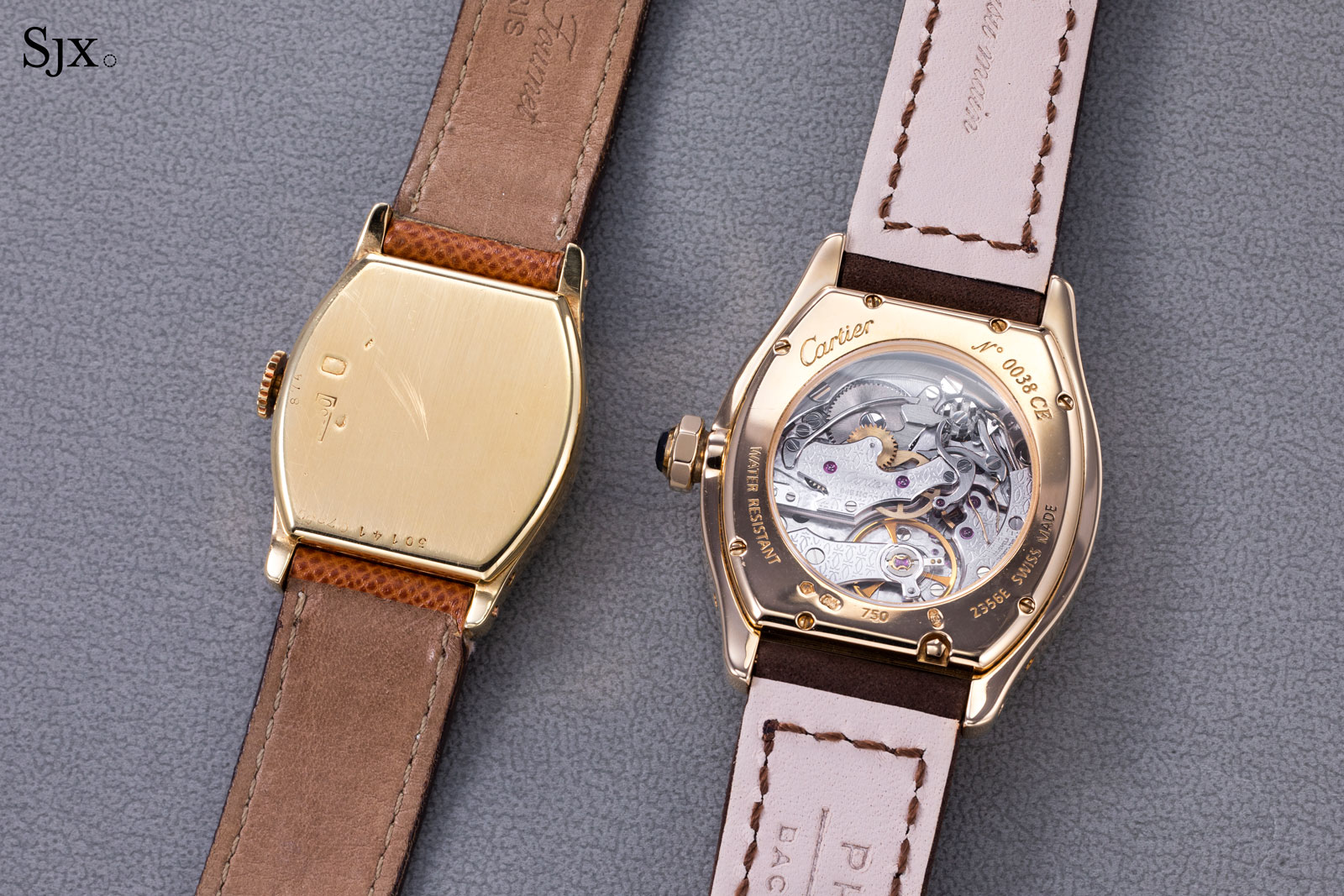
Like all chronographs of the period, the vintage specimen is mono-pusher, which was the standard configuration for chronographs until Breitling separated the start, stop, and reset actions into two pushers in 1934.
While not visible, the movement was supplied European Watch & Clock Co. (EWC), a joint venture between Edmond LeCoultre and Cartier to produce watches for the jeweller. EWC in turn relied on many top movement makers of the day, including LeCoultre and Victorin Piguet.
But as is often the case with Cartier watches, the highlight is the design. Though tiny by modern standards, the watch is combination shapes and details that are concise yet refined.
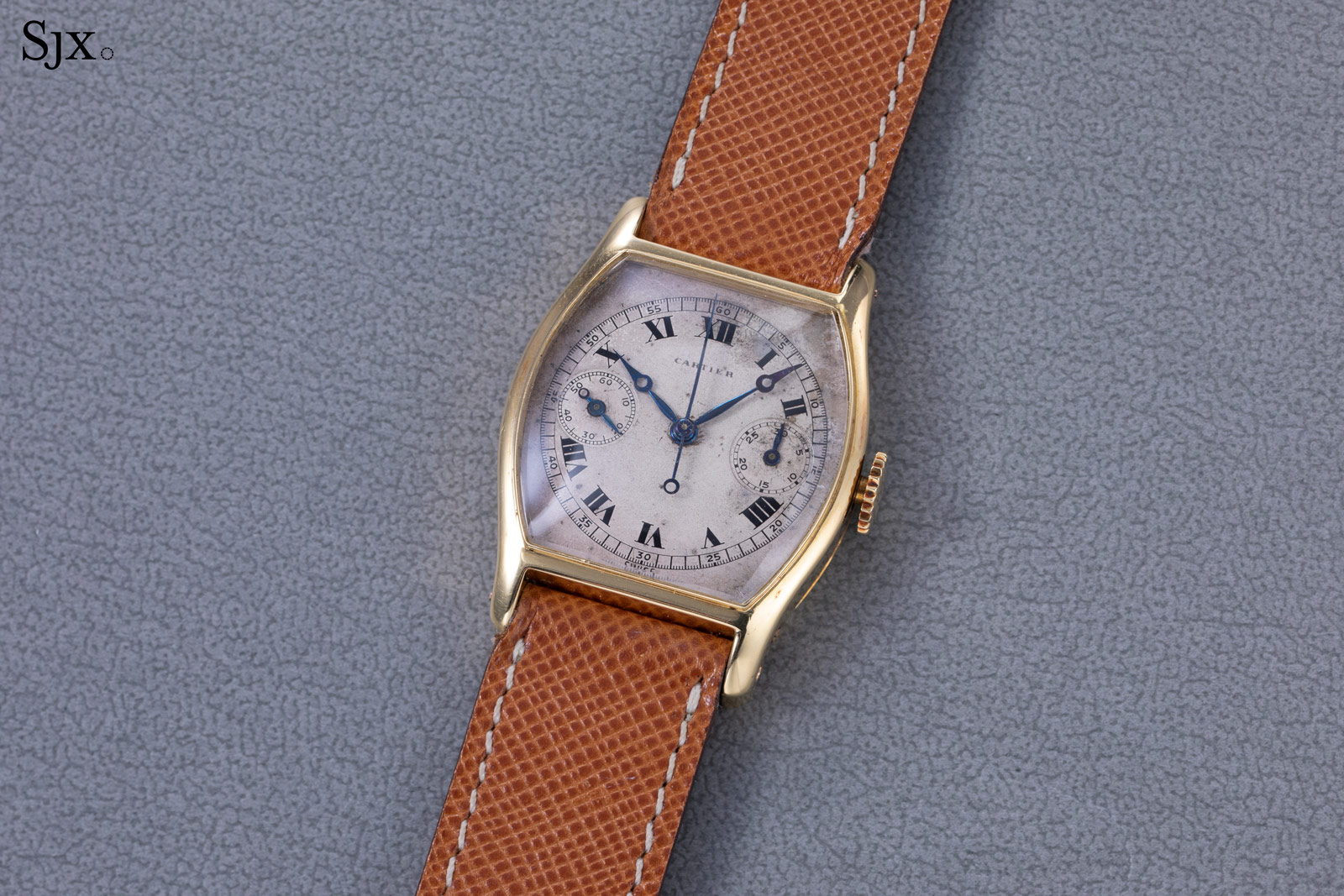
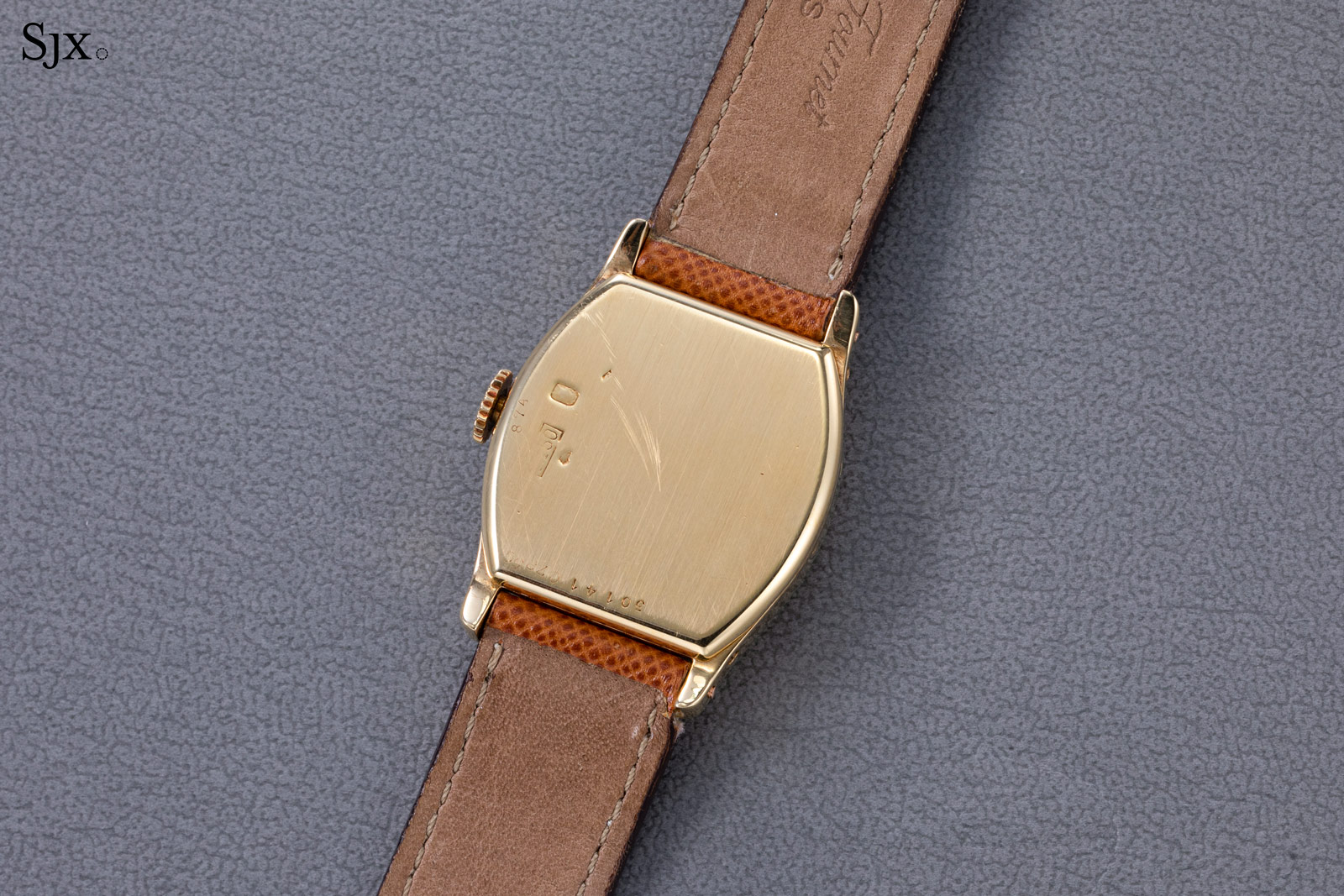
As is practically the norm for vintage Cartier watches until the 1970s, this shows significant ageing on the dial. That said, the dial is original while its markings remain intact. The case also shows wear, with the hallmarks on the back partly worn off due to polishing.
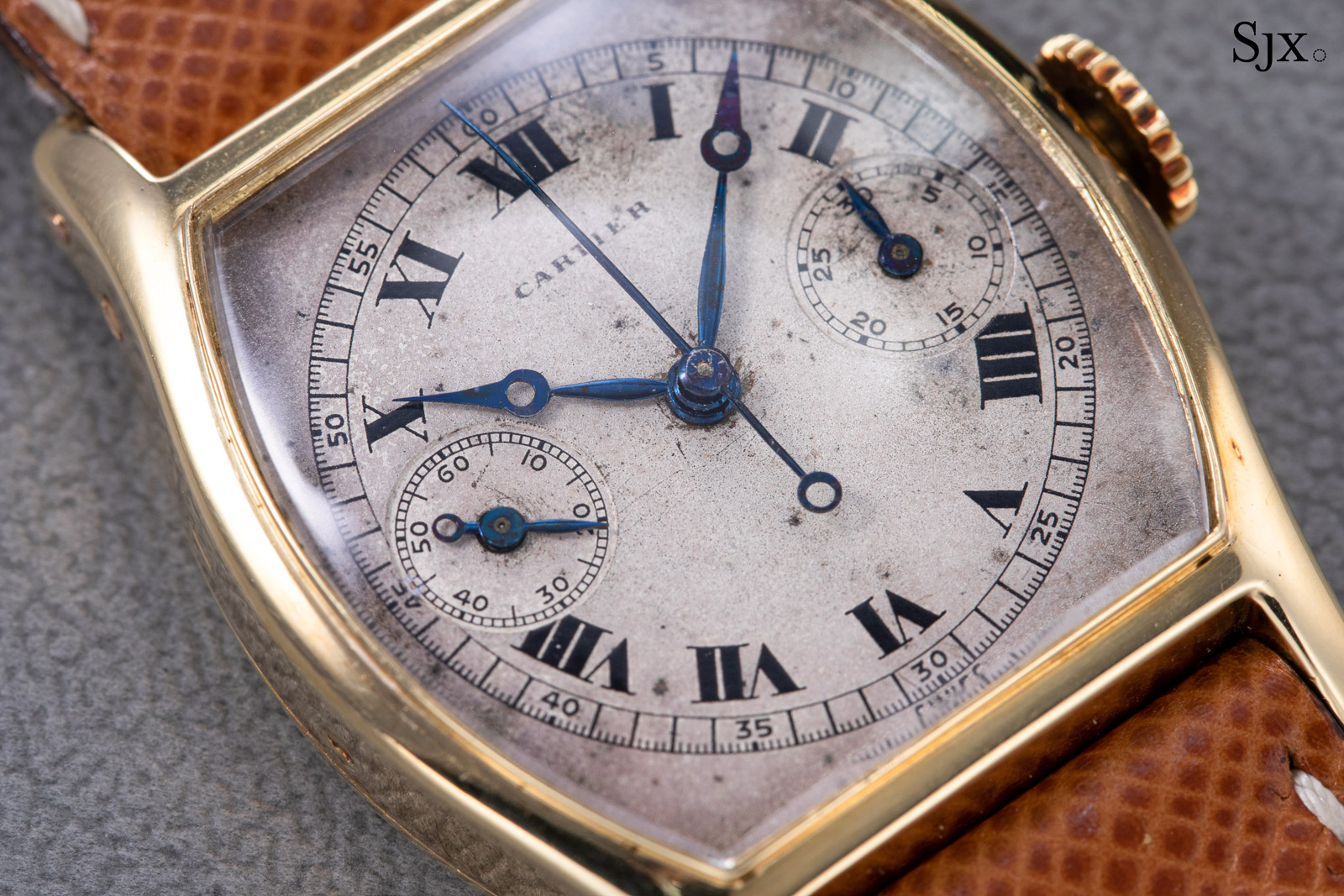
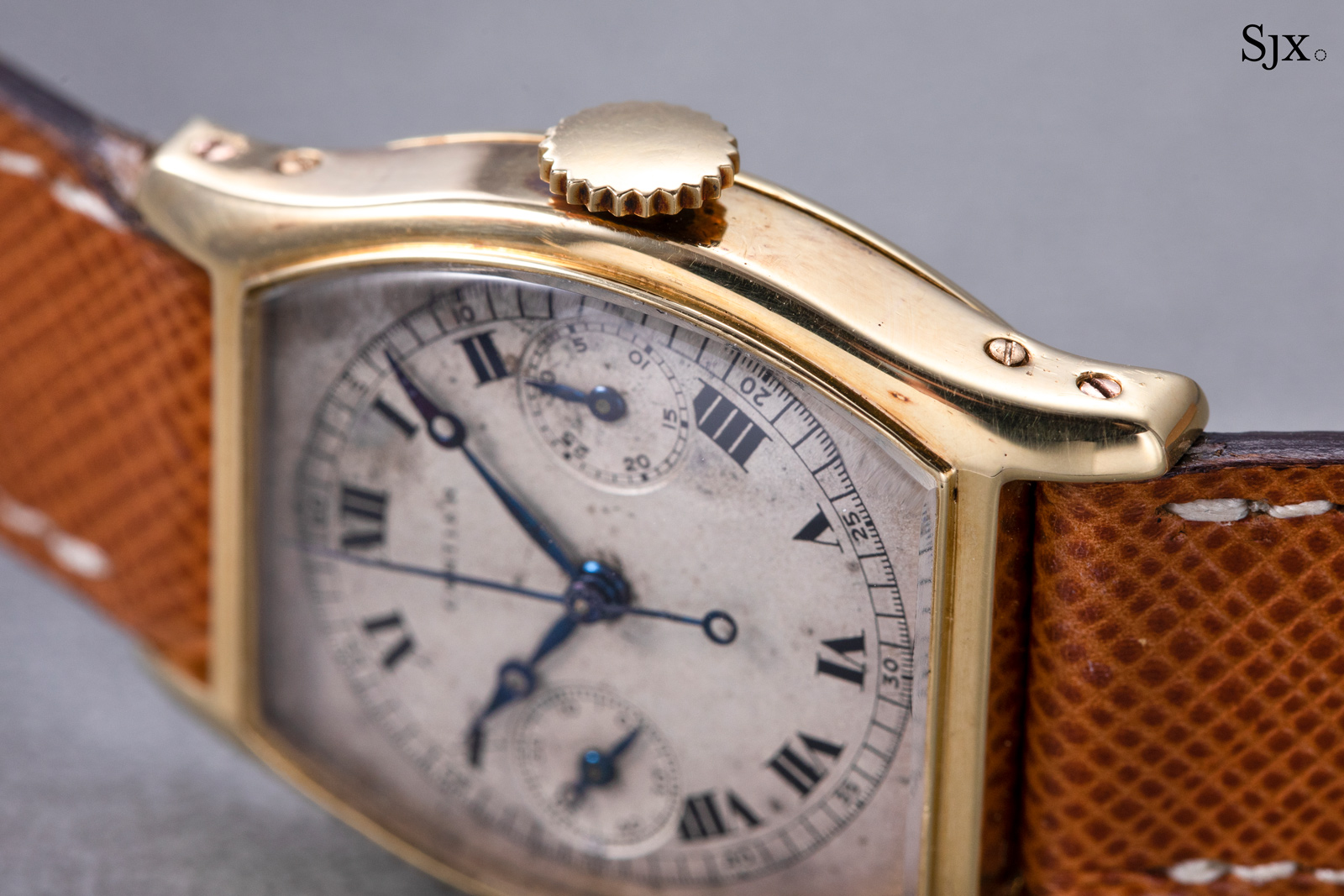
The screws on the case sides to secure the back, which are also found on the modern version
The modern example is clearly modelled on the original, but the design was tweaked. For one, the proportions of the case were changed to accommodate the larger movement. Its profile is thicker, and bezel wider. And as was convention for the CPCP models, the dial is decorated with guilloché centred on a rosette around the axis of the hands.
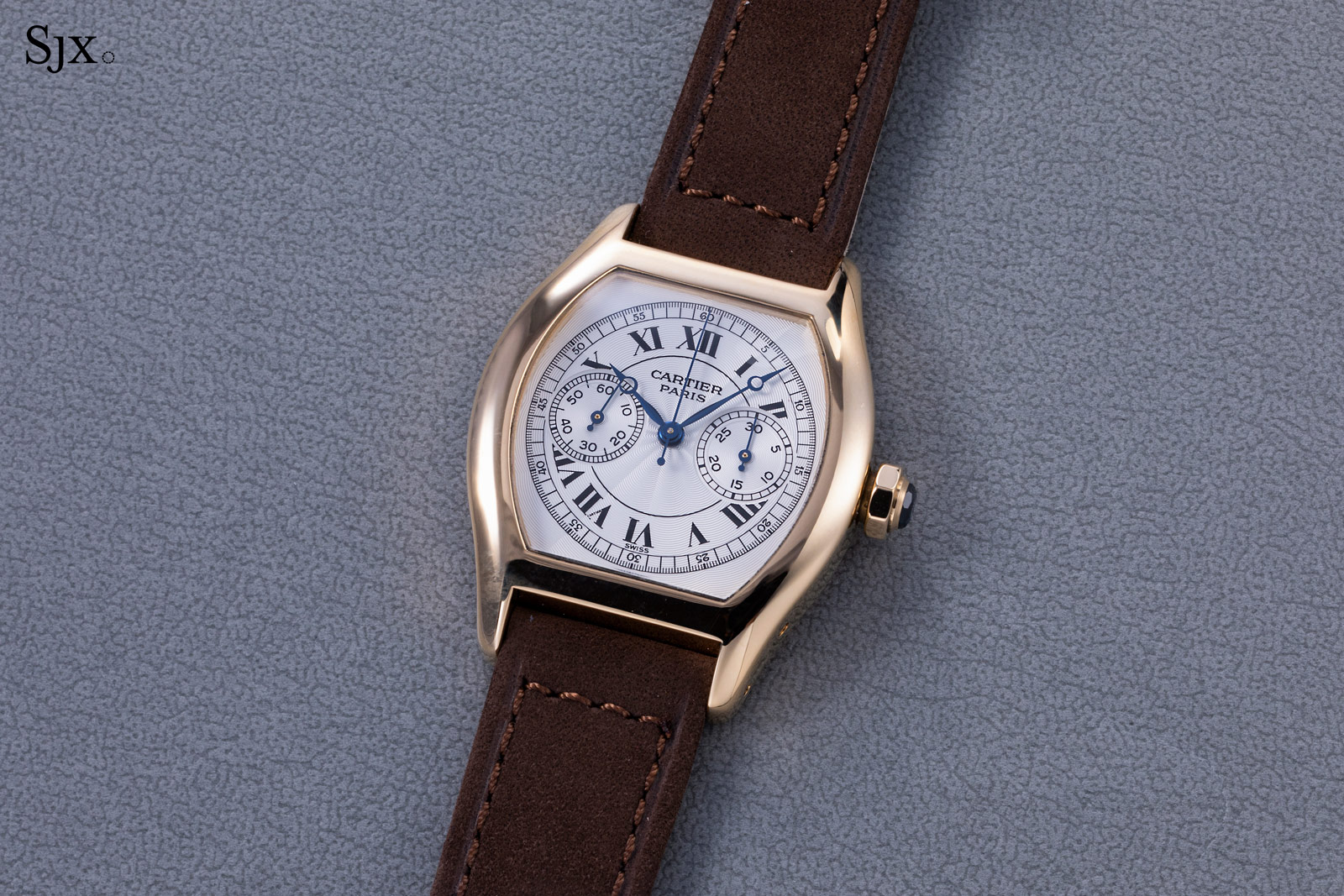
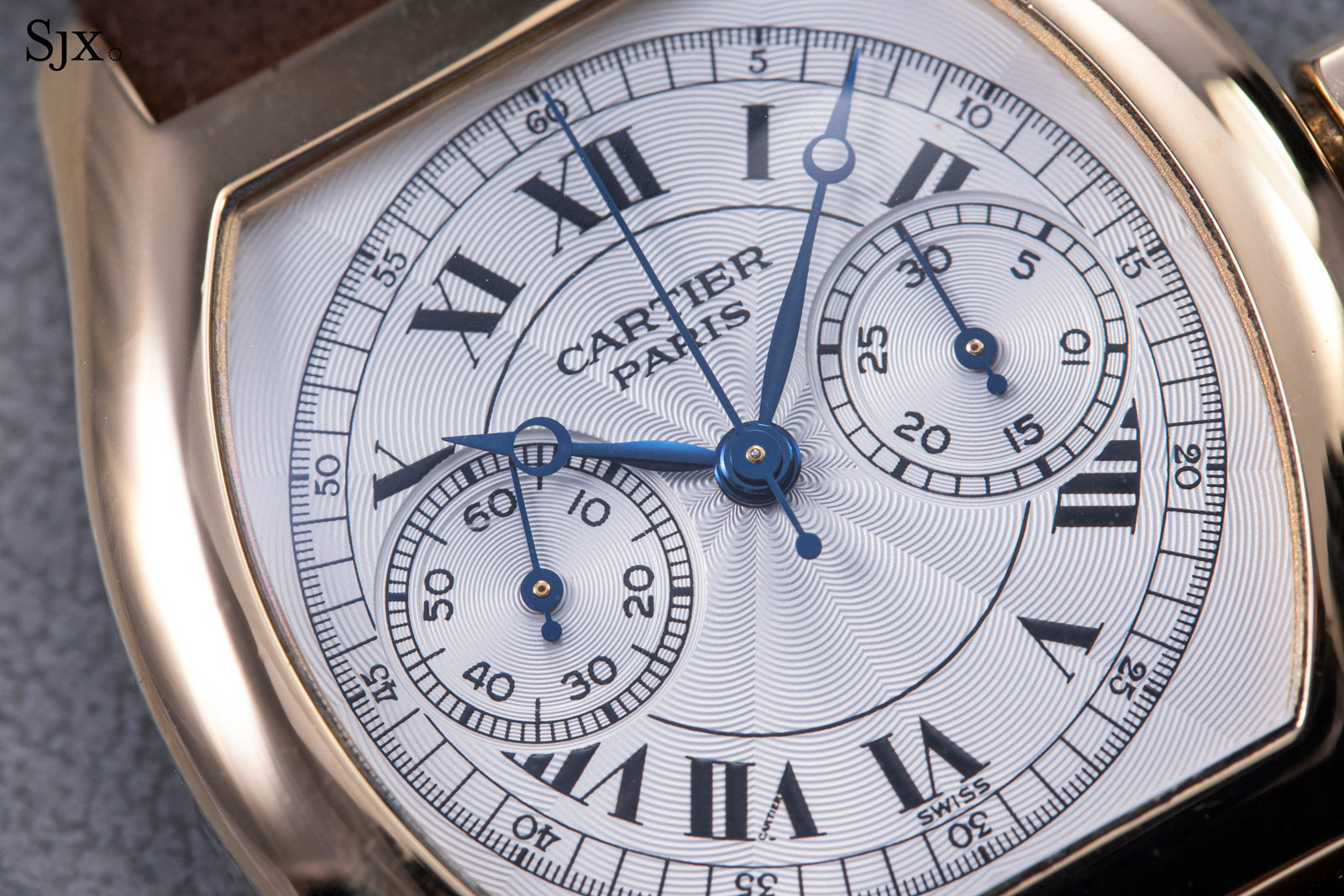
The movement was made by Techniques Horlogères Appliquées (THA), a movement specialist that counted many of today’s leading independent watchmakers as alumni, including Vianney Halter, Denis Flageollet, and Francois-Paul Journe. Like all movements found in the CPCP watches, it is finished with a stamped motif of repeating double “Cs”.
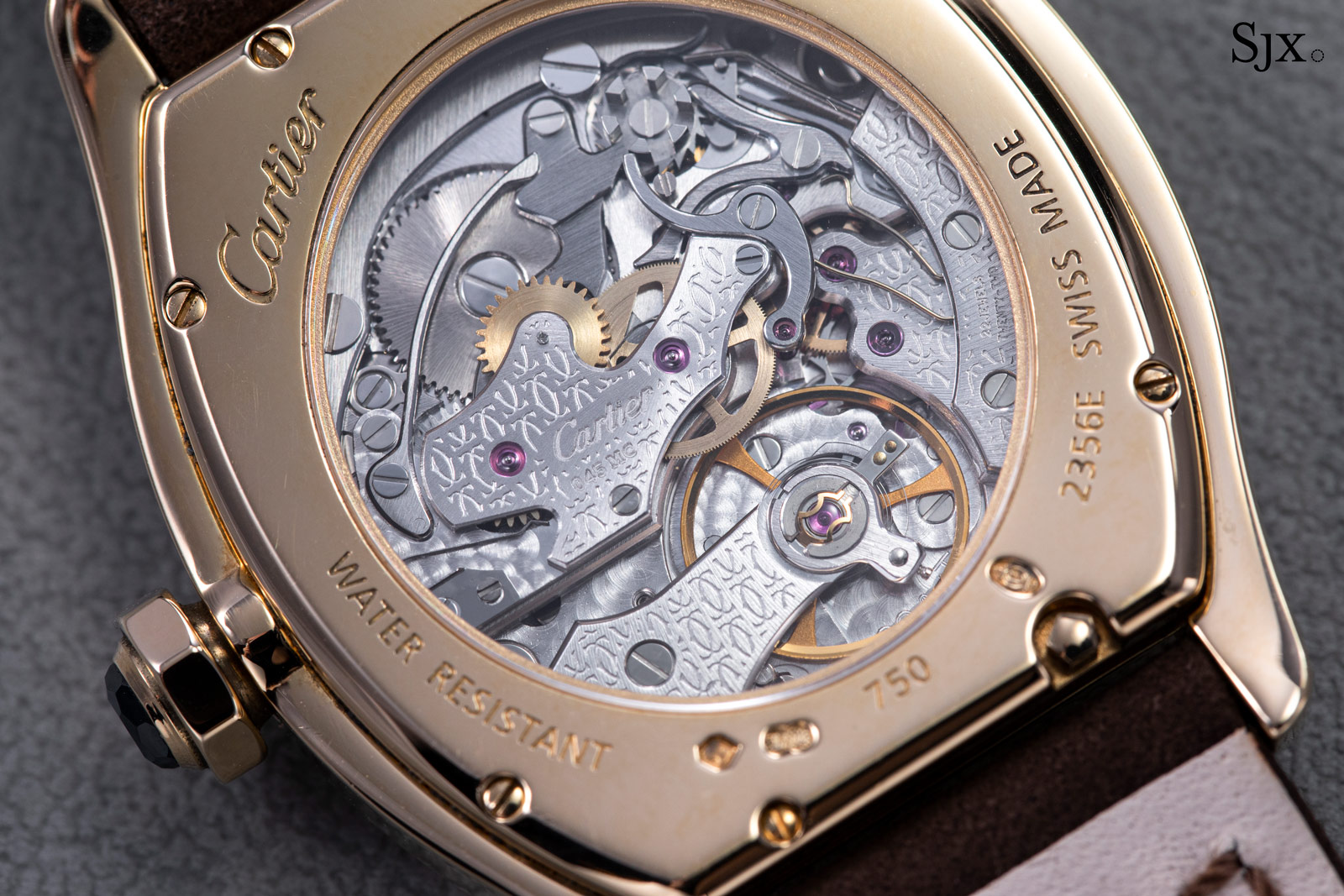
The vintage Tortue has an estimate of CHF60,000-100,000 or US$65,300-109,000. Full lot details here.
The modern CPCP version has an estimate of CHF15,000-25,000, or US$16,300-27,200. More details here.
Lot 127 – Vacheron Constantin American 1921 Perpetual Calendar ref. 43045
With Vacheron Constantin just marking the 100th anniversary of the American 1921 with a limited edition in platinum, this unusual and rare version of the 1921 is going under the hammer at the just the right time.
A perpetual calendar powered by the ultra-thin cal. 1120, this was a limited edition launched in 2008 alongside the standard American 1921. But because it was a run of only 20 pieces sold only at four Vacheron Constantin boutiques, it is little known and rarely seen.
In fact, aside from these 20 pieces, Vacheron Constantin made only a handful of custom-order 1921 perpetuals, making the model exceptionally rare.
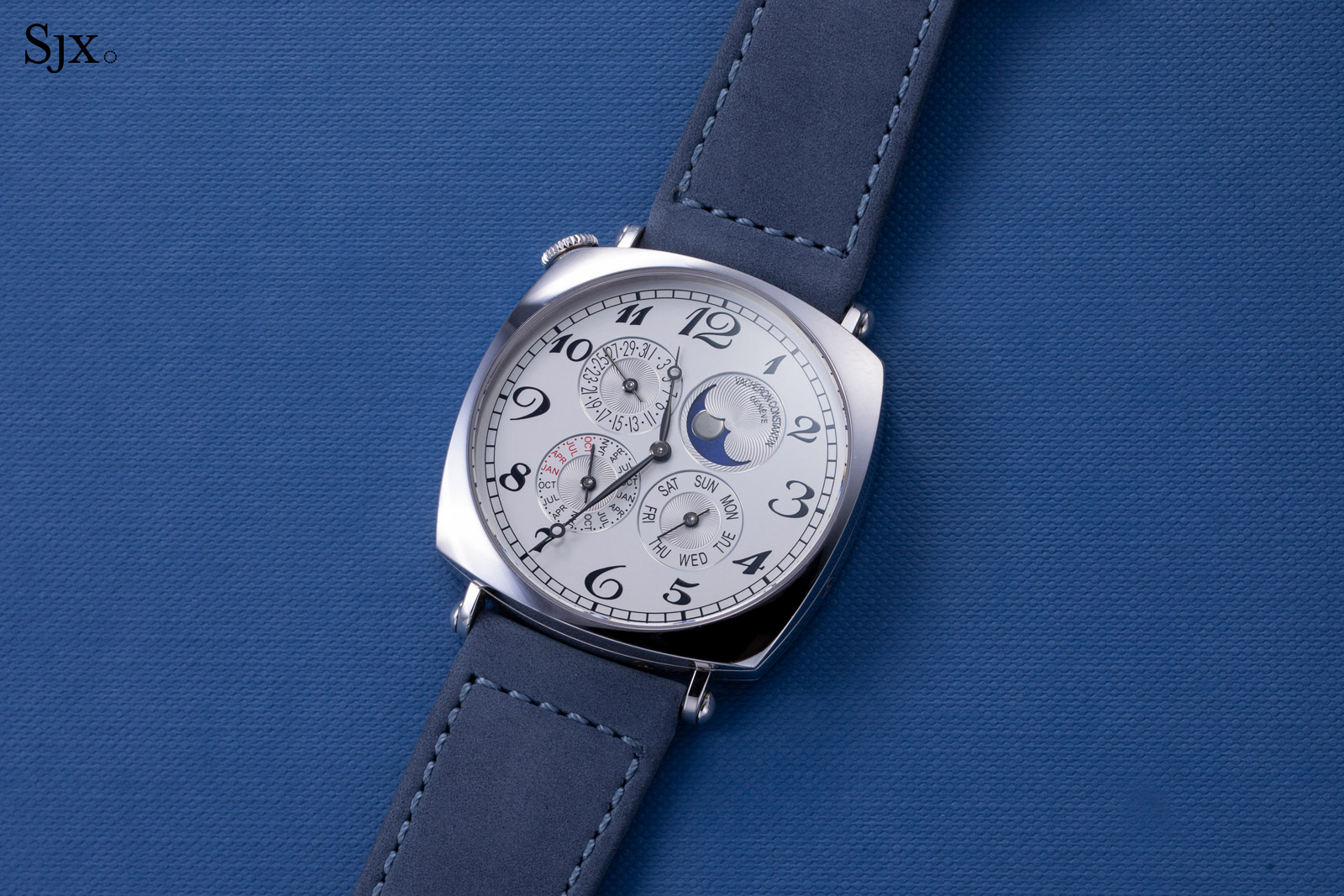
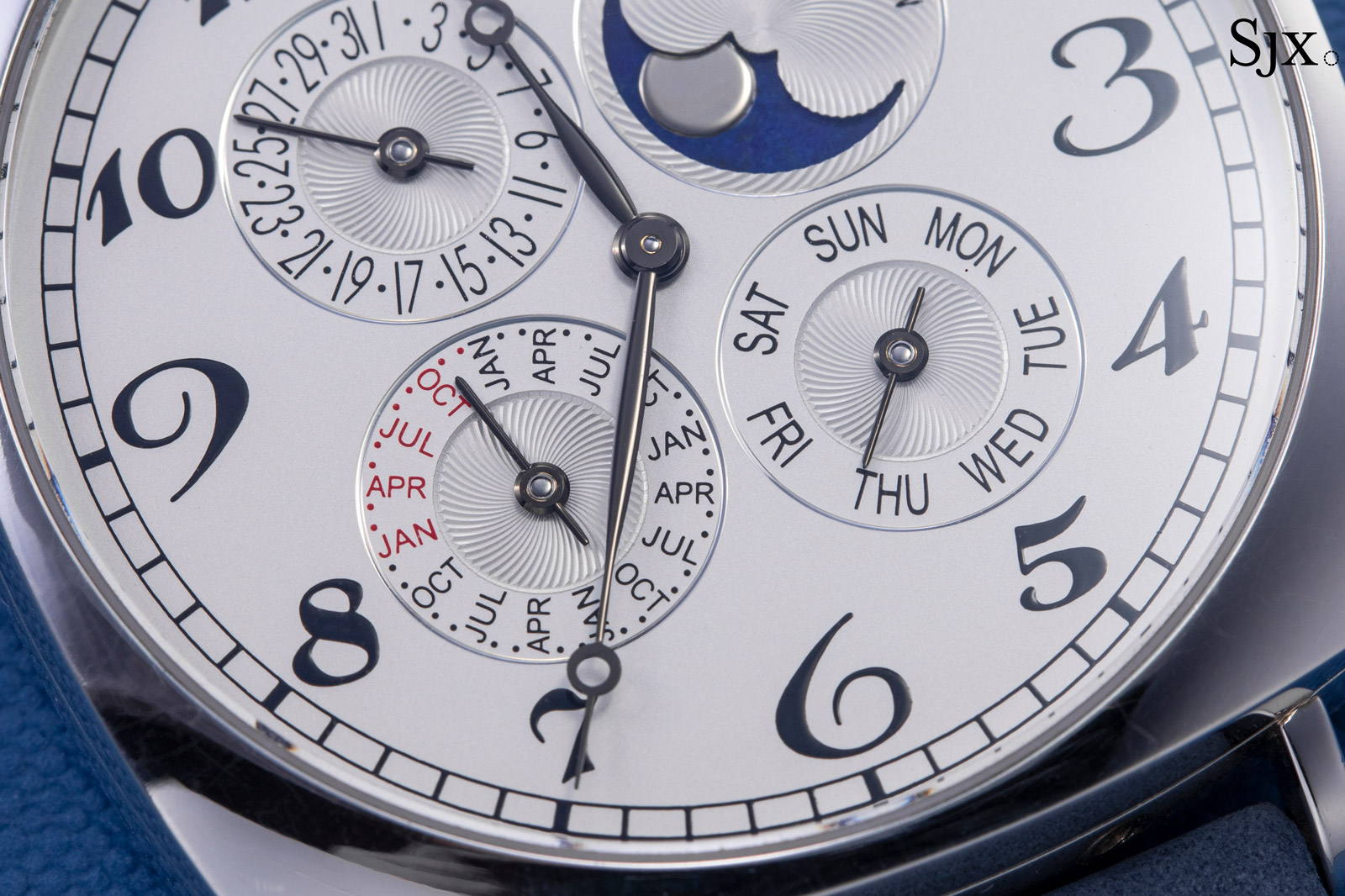
Though this is seemingly identical to the standard American 1921, its crown and dial are in an entirely different orientation. While the time-only American 1921 has its crown on the right top corner of the case, this one has it on the left.
Intriguingly, this leftmost position is the harks back to the original model, which was made in 1919. That watch had aligned off the vertical to the left. The version that inspired the modern-day American 1921 only arrived in, well, 1921.
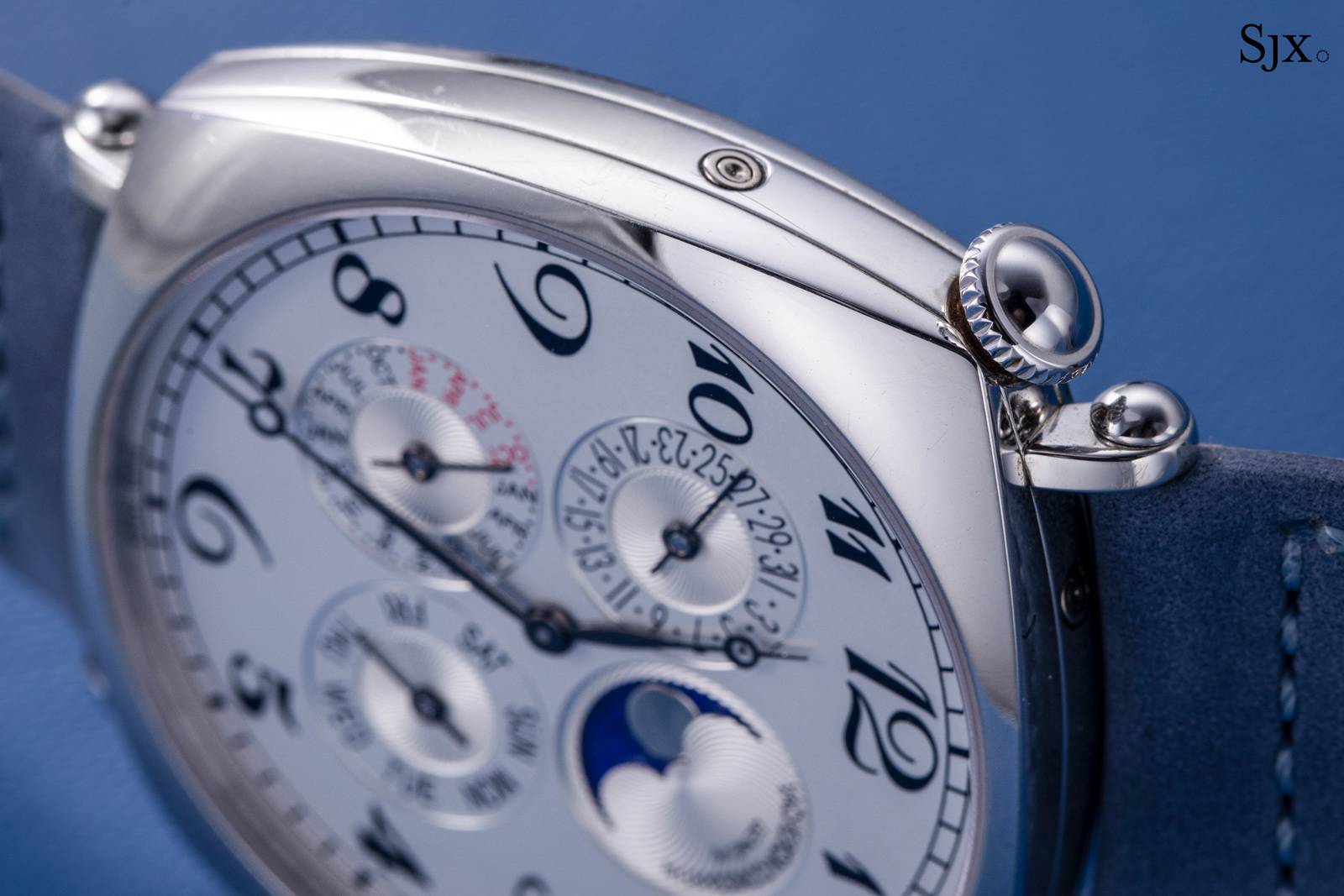
And the dial of the perpetual calendar is the right side up. While that means the quirky nature of the standard American 1921 is lost, the perpetual calendar dial benefits from the correct vertical alignment, being more intuitive to read.
That said, the perpetual calendar sub-dials are arranged slightly unconventionally. Because the crown is at 11 o’clock instead of the usual three, the sub-dials are rotated 270 degrees, putting the moon phase in the usual one o’clock location.
All in all, the design of the 1921 perpetual calendar is less original than the time-only model, but it remains equally distinctive on the wrist. And the fact that only 20 were made substantially increases its appeal.
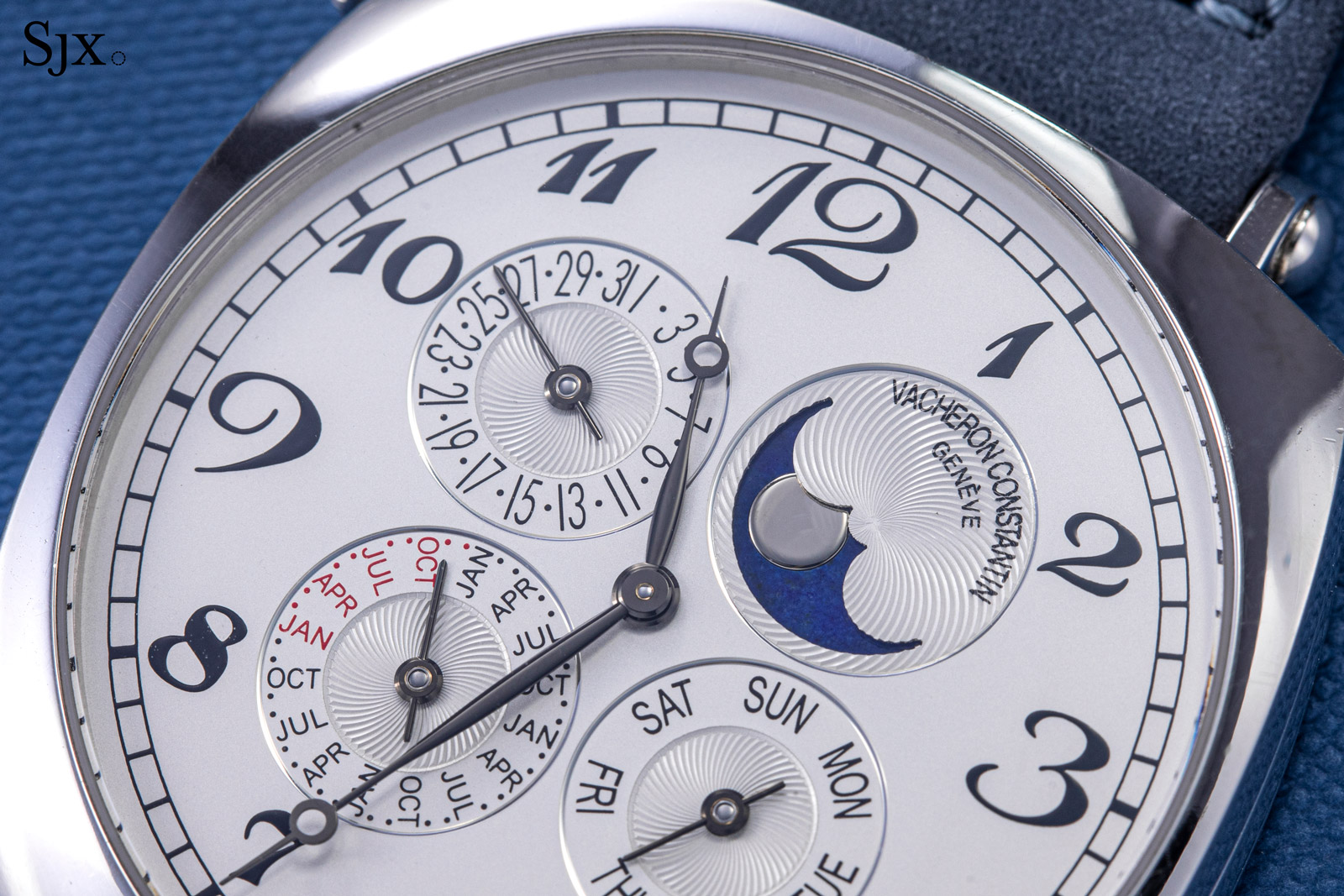
Also found in the Overseas Perpetual Calendar, the movement within is notable for its slimness. The cal. 1120 is essentially an improved version of the Jaeger-LeCoultre cal. 920 that debuted in 1967.
Despite being rather dated, it is an impressively slim and refined movement, explaining why it’s remains in production at both Vacheron Constantin and Audemars Piguet.
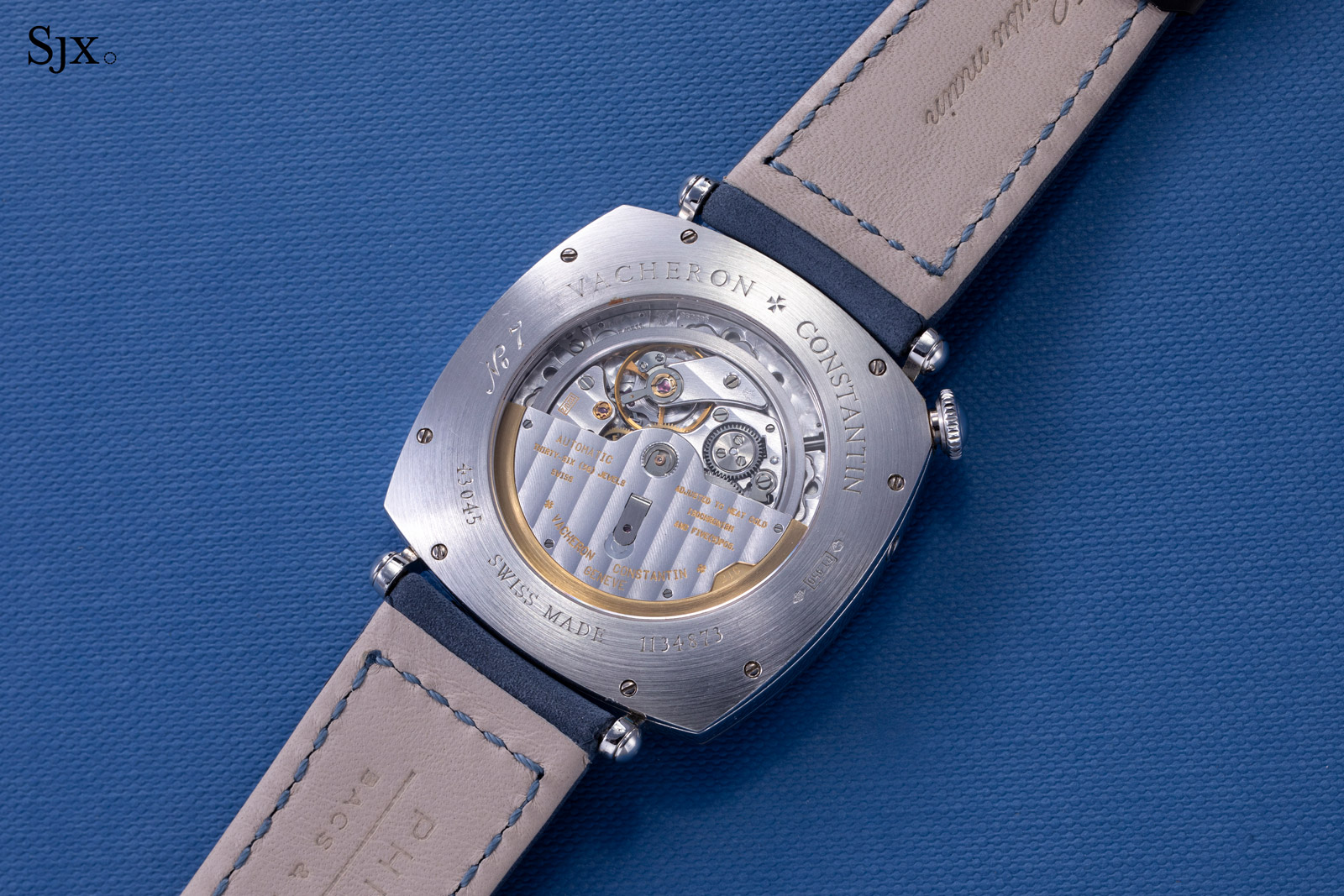
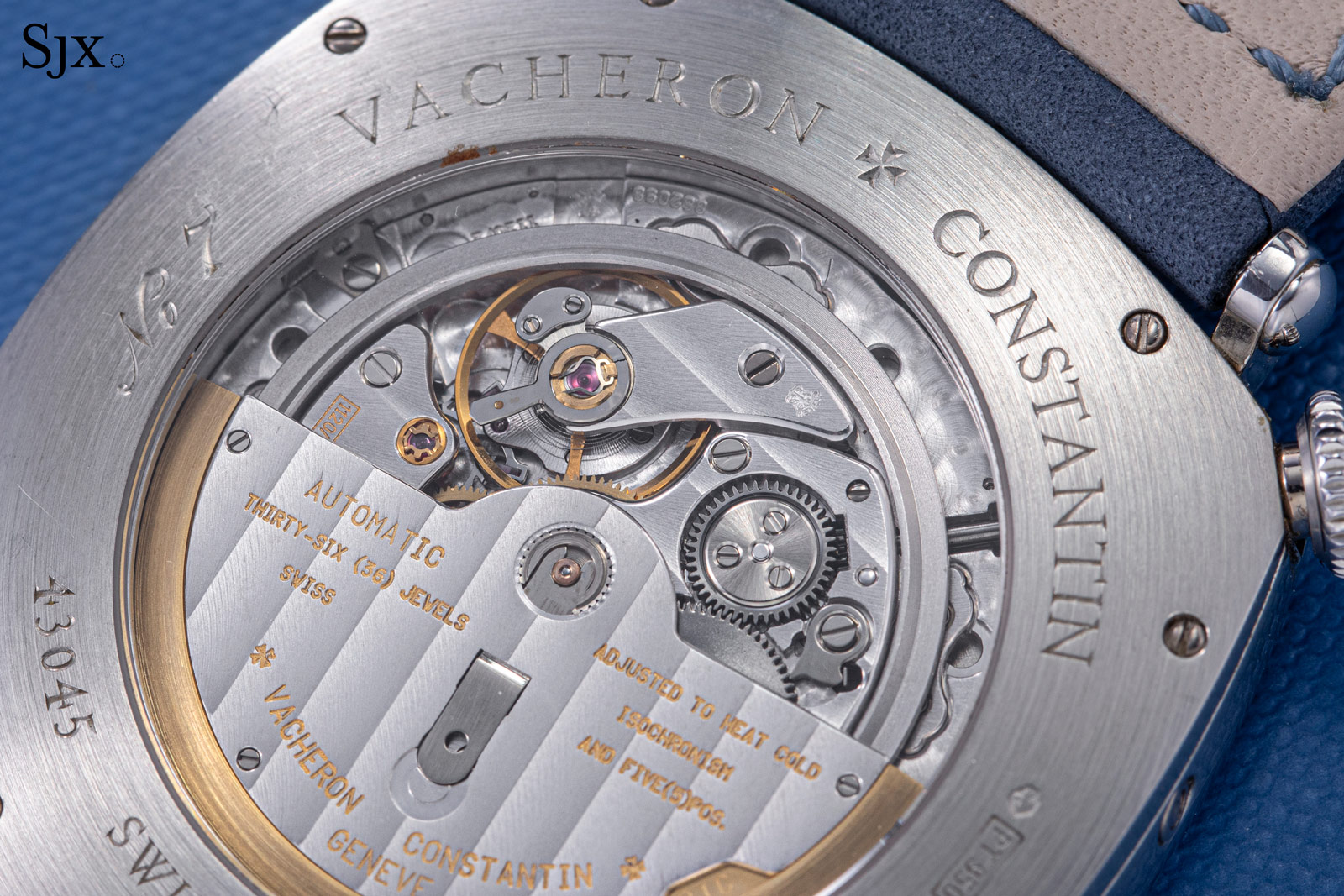
Accompanied by its original documents and boxes, the ref. 43045 has an estimate of CHF30,000-50,000, or about US$32,700-54,400. That’s a modest range, with the high estimate is around the retail price of the American 1921 in platinum. The last example to sell at auction sold for CHF57,500 in 2017. Full lot details here.
Lot 142 – Harry Winston Opus 1 Tourbillon by F.P. Journe
This lot, like the Roger W. Smith that follows below, is an intriguing example of an early work by a now-successful independent watchmaker. Neither watch looks very much like the timepieces either watchmaker now produces, illustrating the evolution of both, as well as the adventurous spirit of a struggling startup.
Made shortly after François-Paul Journe set up his own brand, the Opus 1 marked the beginning of the Opus series. The brainchild of Max Büsser, then the chief executive of Harry Winston’s watch division, the Opus series was a collaborative edition between the jeweller and an independent watchmaker, merging unique watchmaking ideas with the design of Harry Winston.
Launched in 2001, Opus 1 was made up of three models – the only three that F.P. Journe offered at the time – the Octa Réserve de Marche, Chronomètre a Resonance, and the Tourbillon Souverain. Six pieces of each were made, with each having differences in dial colour, while a handful were set with diamonds, making each a piece unique.
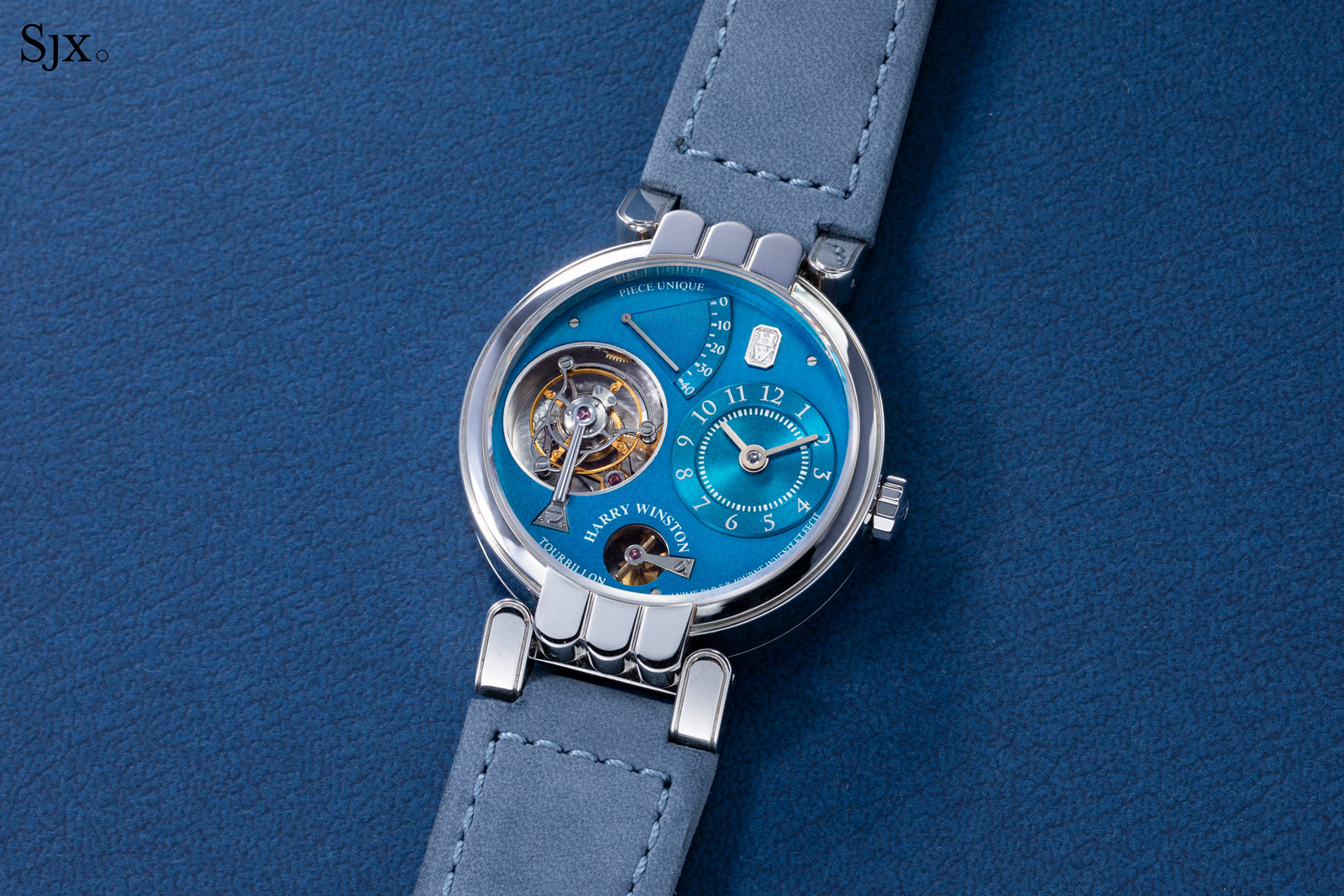
The present example is a Tourbillon Souverain with a turquoise dial that was lacquered by hand as all of them were . With dial variations often arousing the interest of F.P. Journe collectors, the unusual turquoise dial definitely stands out, albeit not being entirely an F.P. Journe.
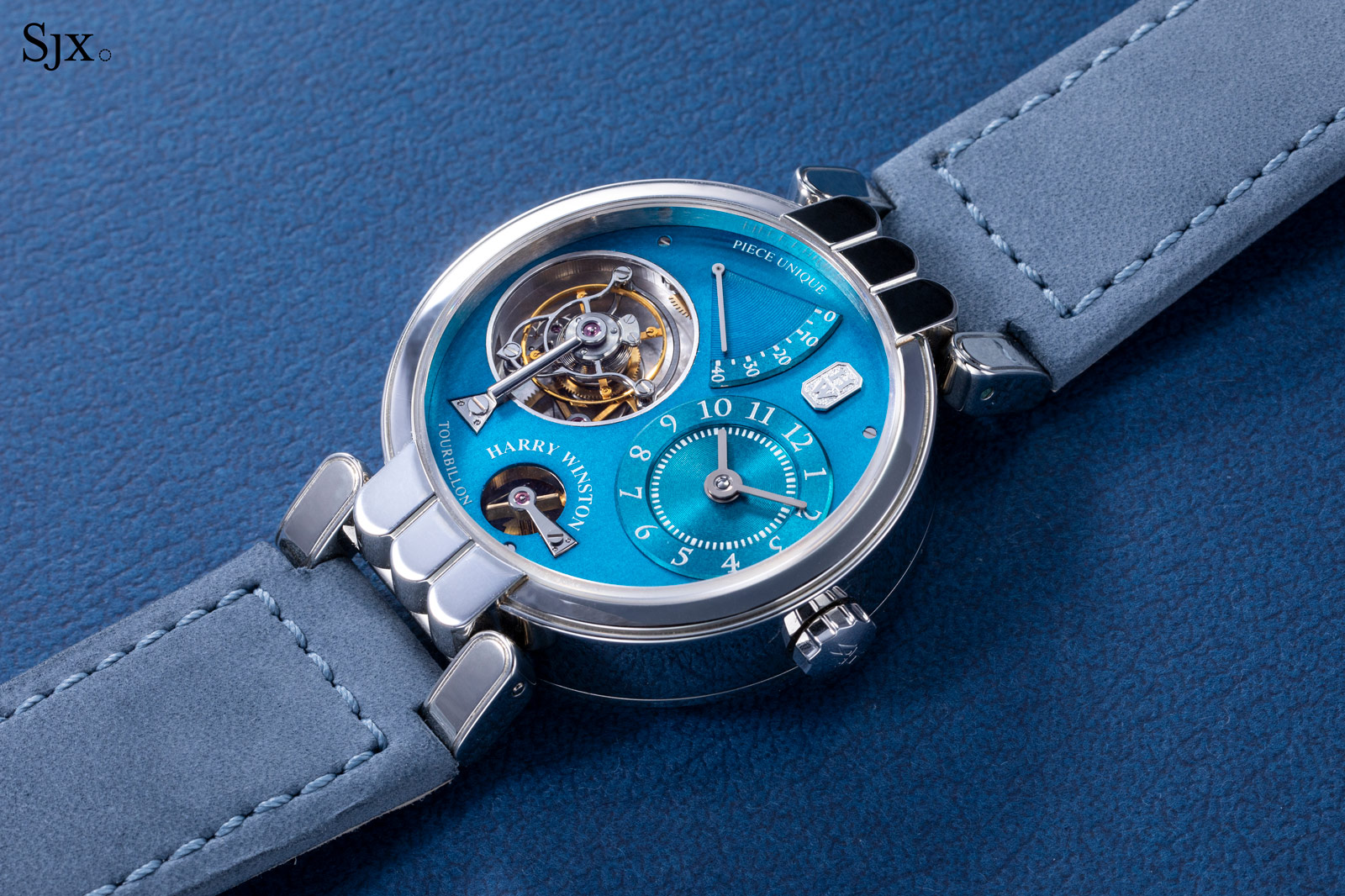
But the dial layout is instantly recognisable as the F.P. Journe tourbillon, especially with the trademark tourbillon cage at nine o’clock.
The most obvious difference between this and the F.P. Journe tourbillon is the case, which features Harry Winston’s signature lugs that were modelled on the arch above the entrance to its New York store. That, along with the typography and colour, give it a more contemporary and casual appearance, setting it apart from the classical, Breguet-inspired look of F.P. Journe watches.
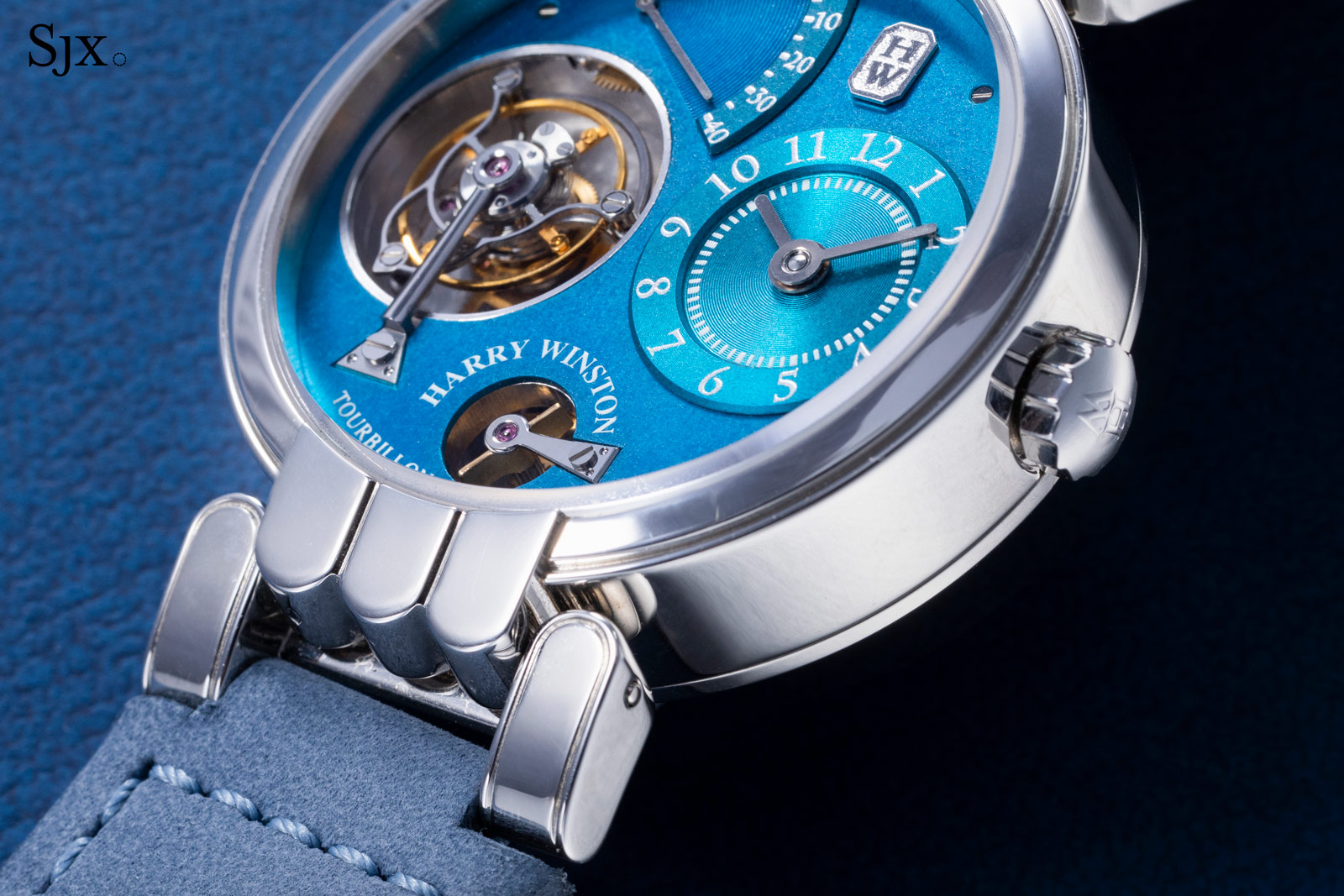
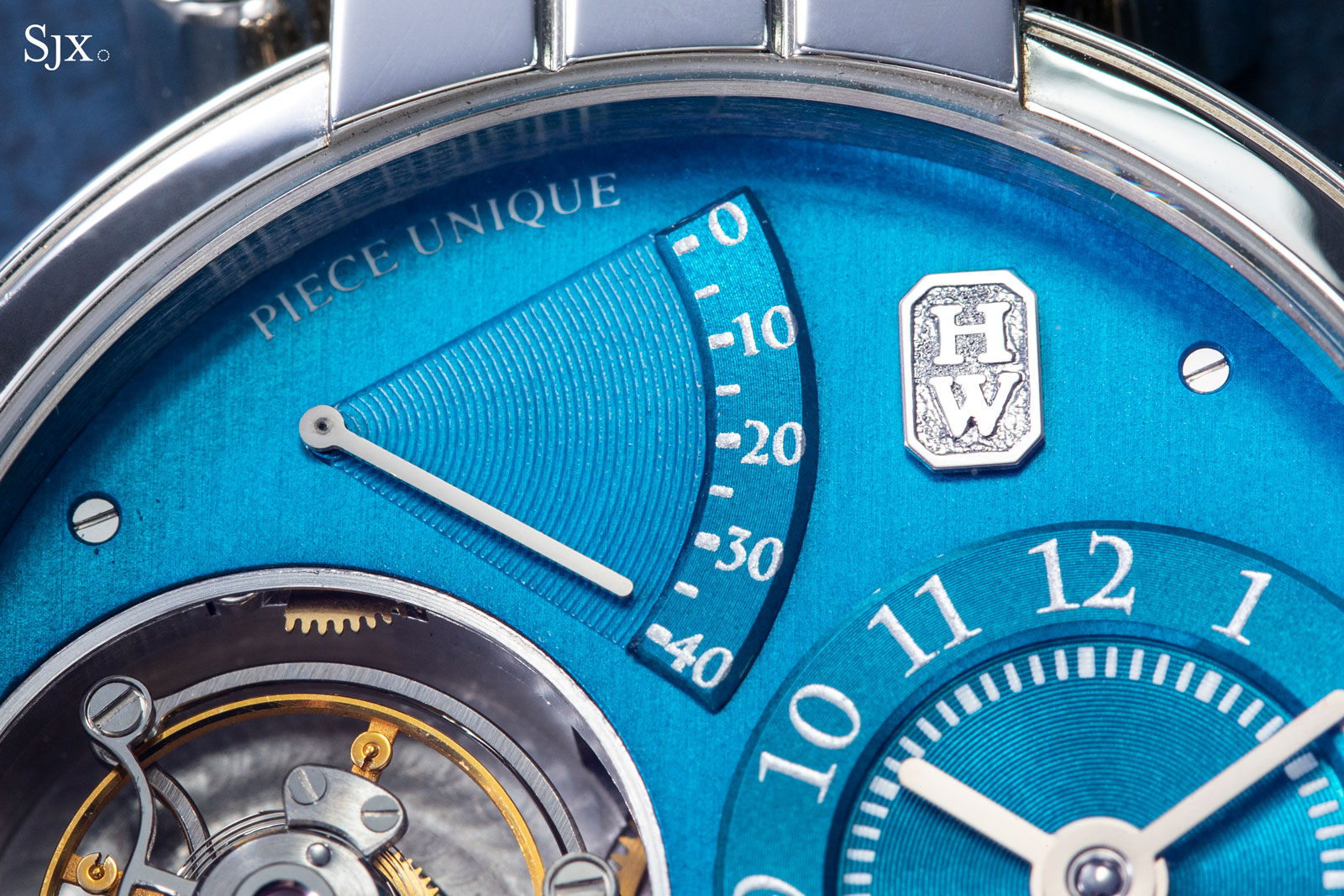
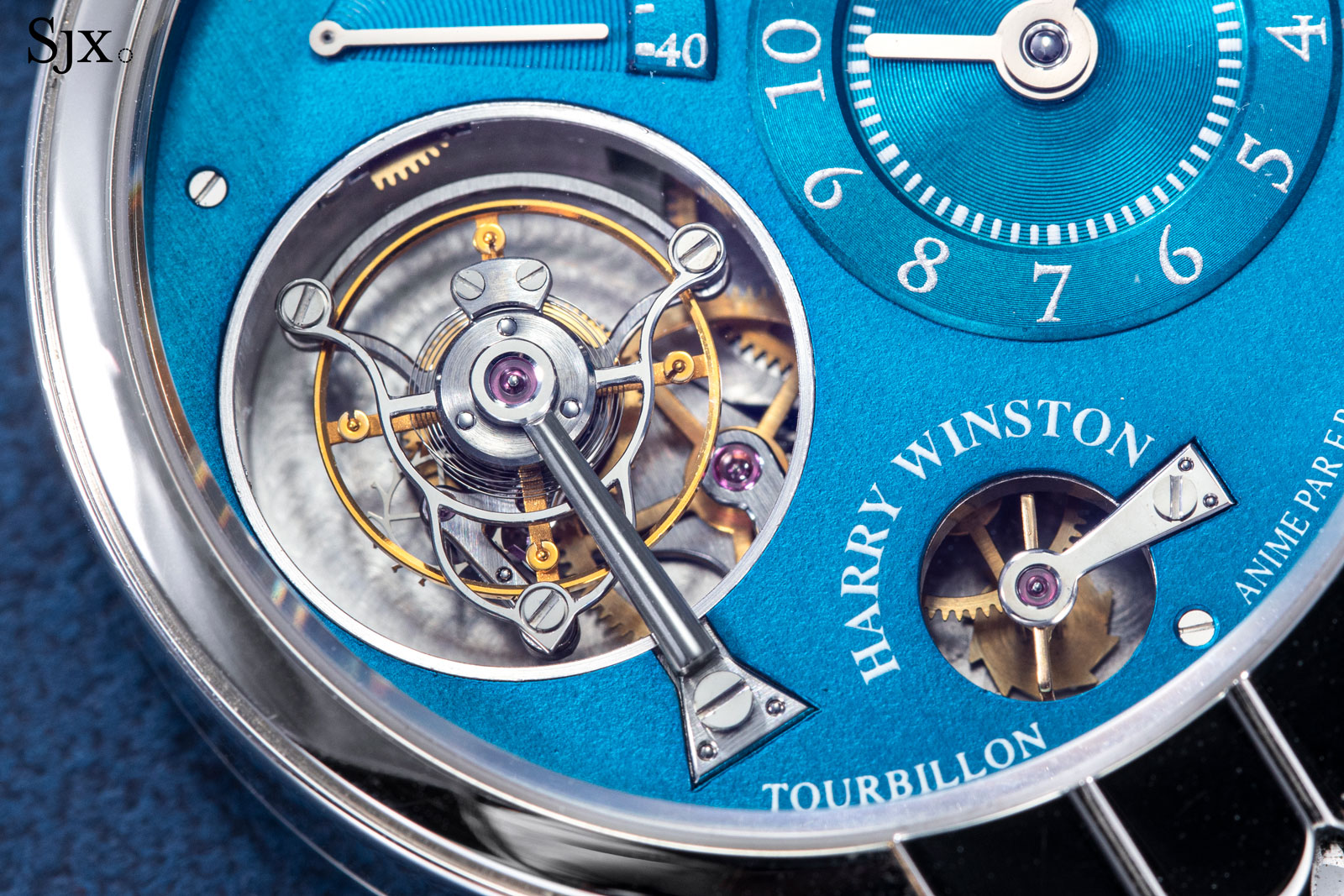
Being an early F.P. Journe movement, the bridges and base plate are brass, instead of the now-standard 18k red gold.
Notably, F.P. Journe will not service these watches, partly due to past friction between Mr Journe and Swatch Group, which owns Harry Winston. That originated in the early 2000s, when Mr Journe unsuccessfully sued Jaquet Droz, another brand owned by Swatch Group, for allegedly copying his dial designs.
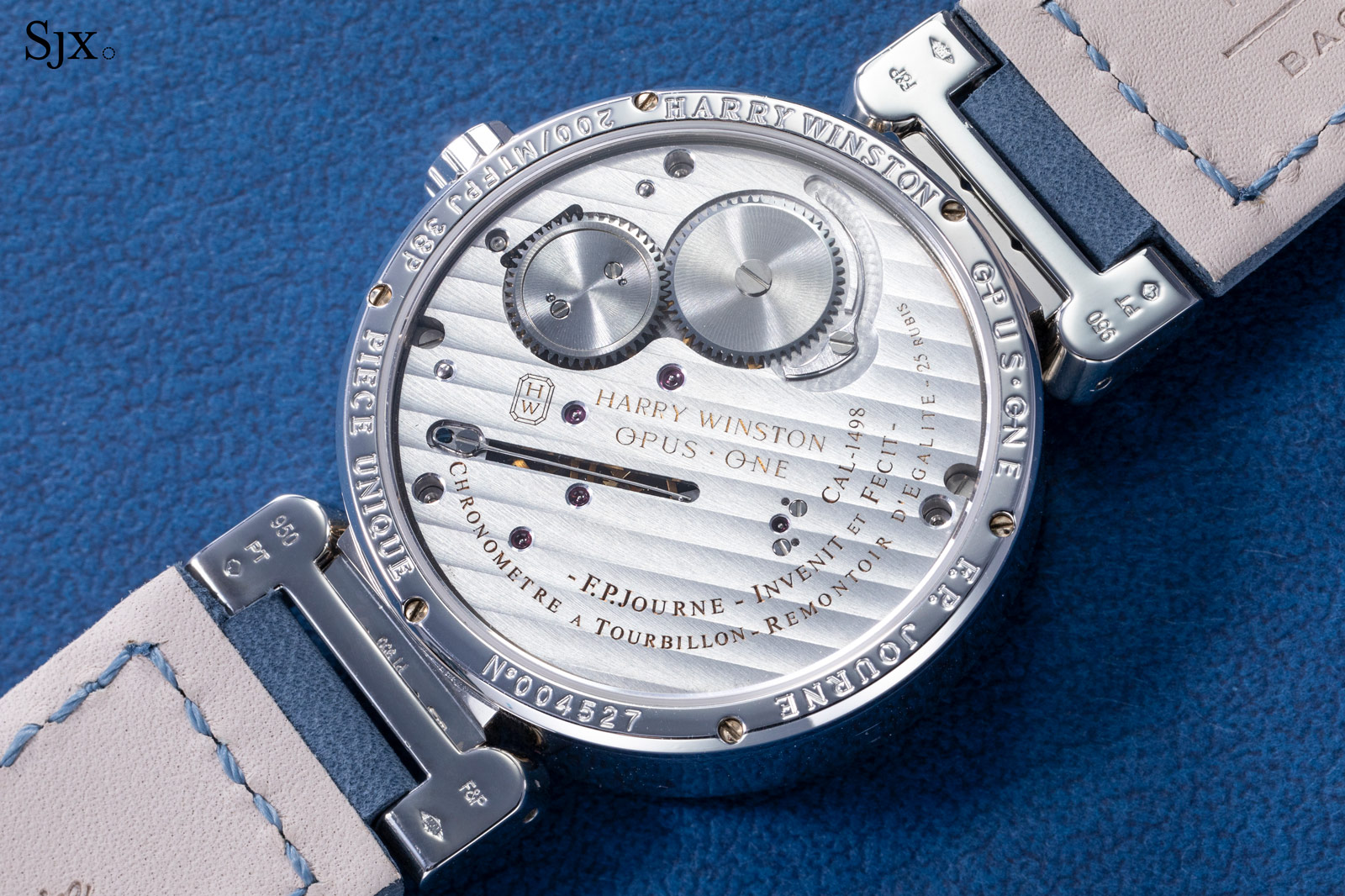
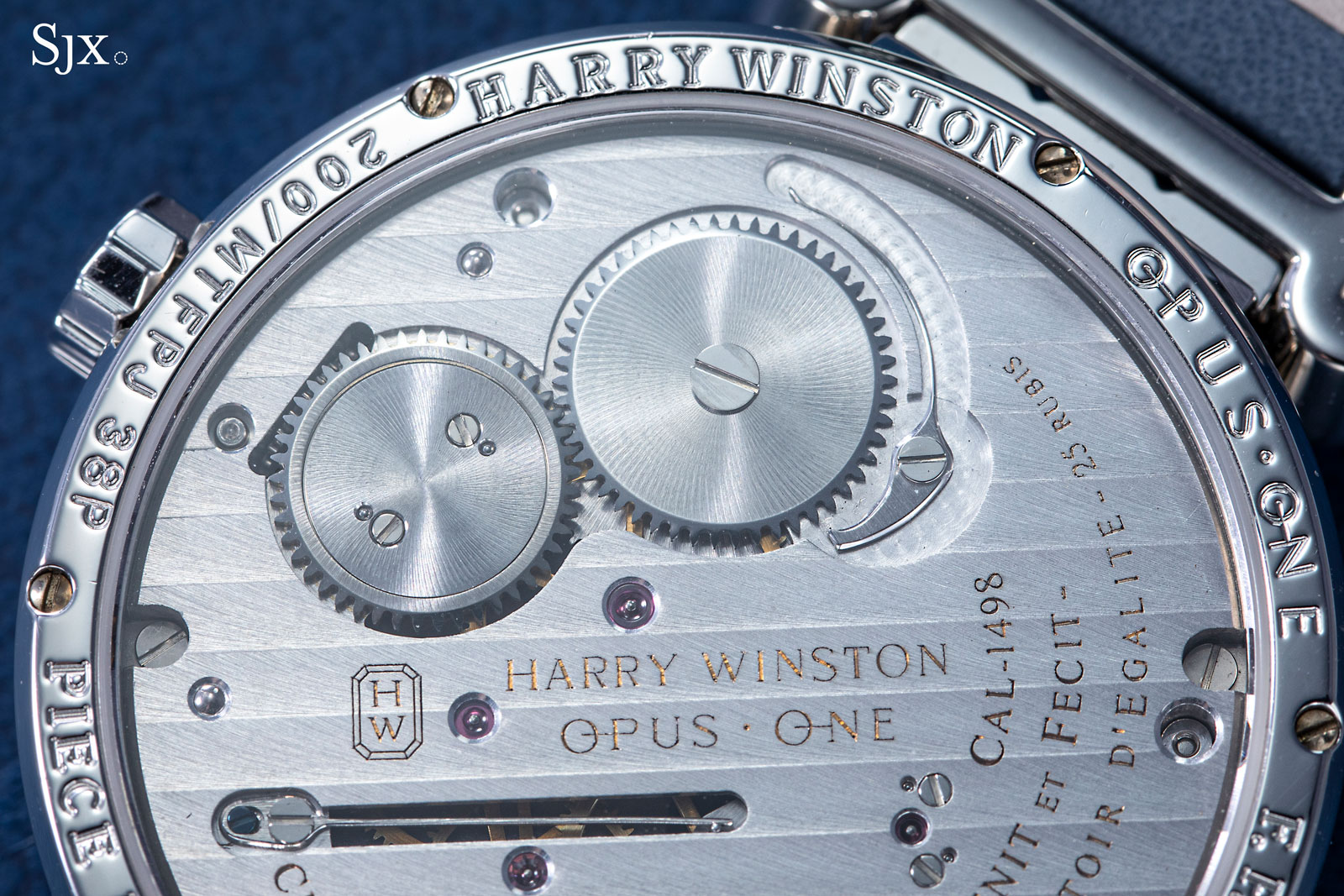
The movement is signed by both F.P. Journe and Harry Winston
The Opus 1 has an estimate of CHF150,000-300,000, or about US$$163,000-327,000, eminently moderate compared to the prices being asked for F.P. Journe tourbillon watches from the same era. Full lot details here.
Lot 145 – Roger W. Smith Series 1 “Onely Theo Fennell”
Best known for eminently classical watchmaking inspired by the timepieces of his mentor George Daniels, Roger W. Smith once produced watches more unusual.
The present example is a Series 1, the first serially-produced watch offered by Mr Smith and often forgotten today. Unlike today’s Series 1, which is actually a simpler version of the Series 2, the original Series 1 has an rectangular case as well as a retrograde calendar.
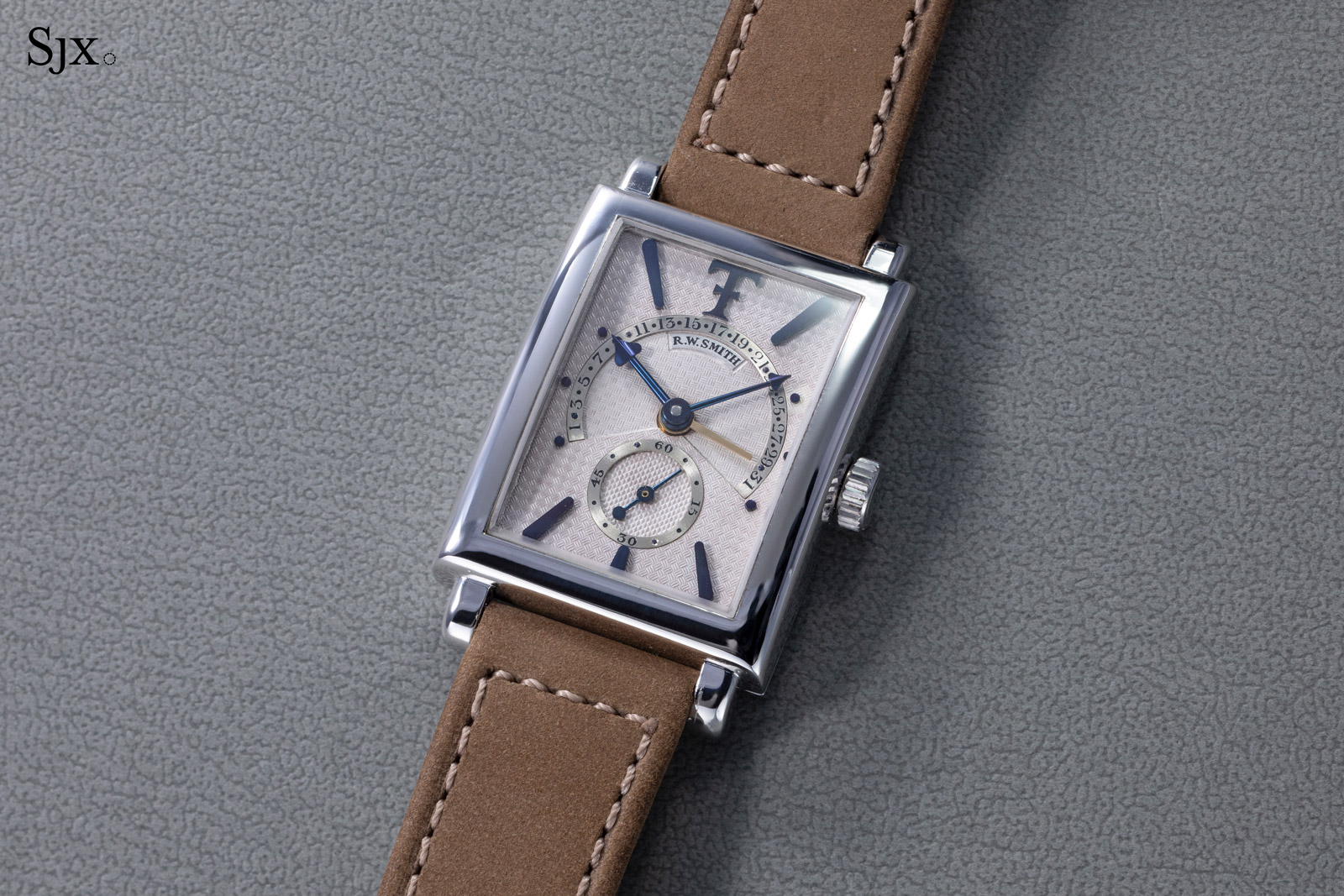
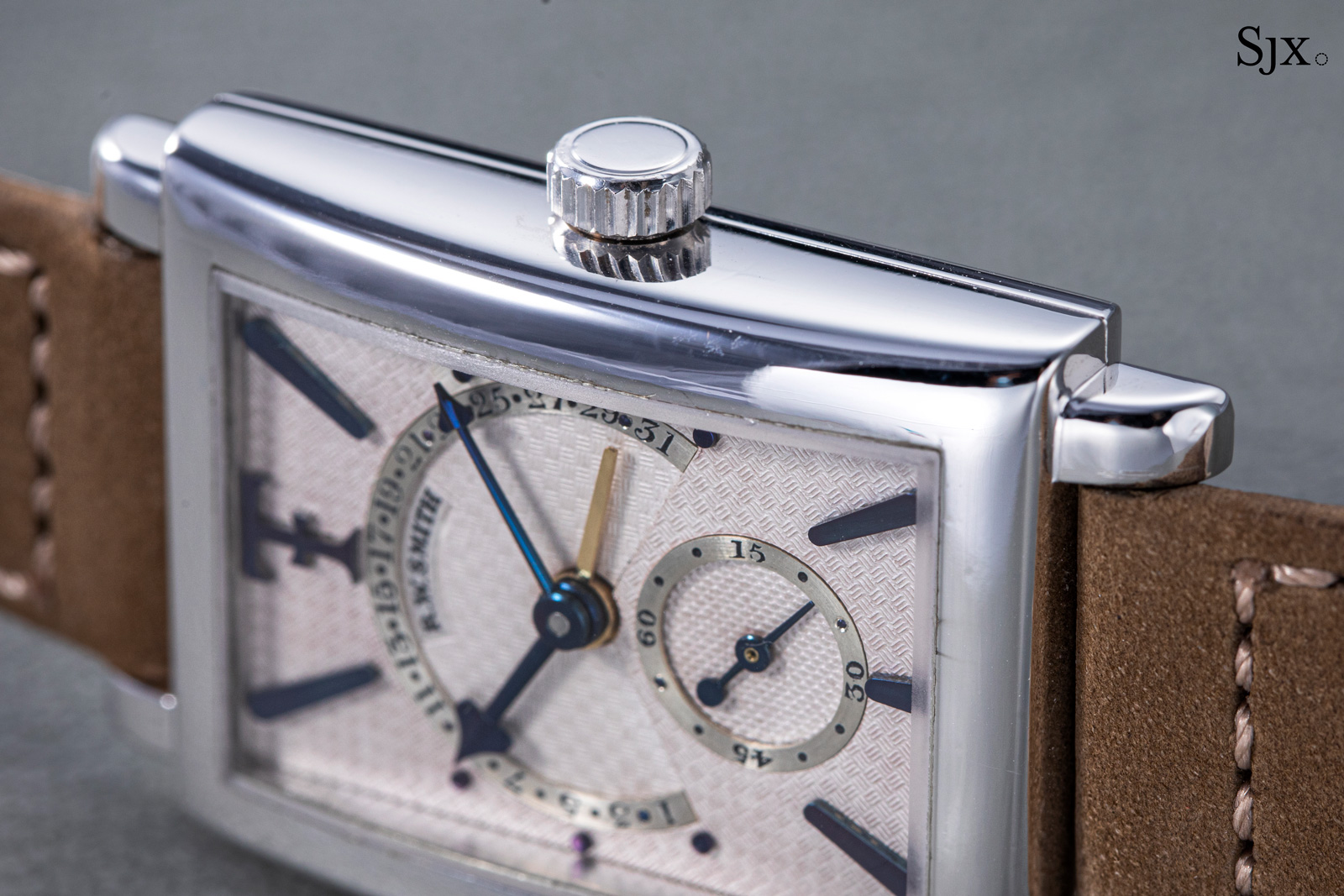
But among the nine Series 1 watches made, there were even more unusual in being produced for Theo Fennell, the London jeweller known for its original, amusing designs. Known as the Theo Fennell Onely, these watches had the jeweller’s logo at 12 o’clock. And this only example was the only Series 1 made in white gold, with the rest in yellow gold.
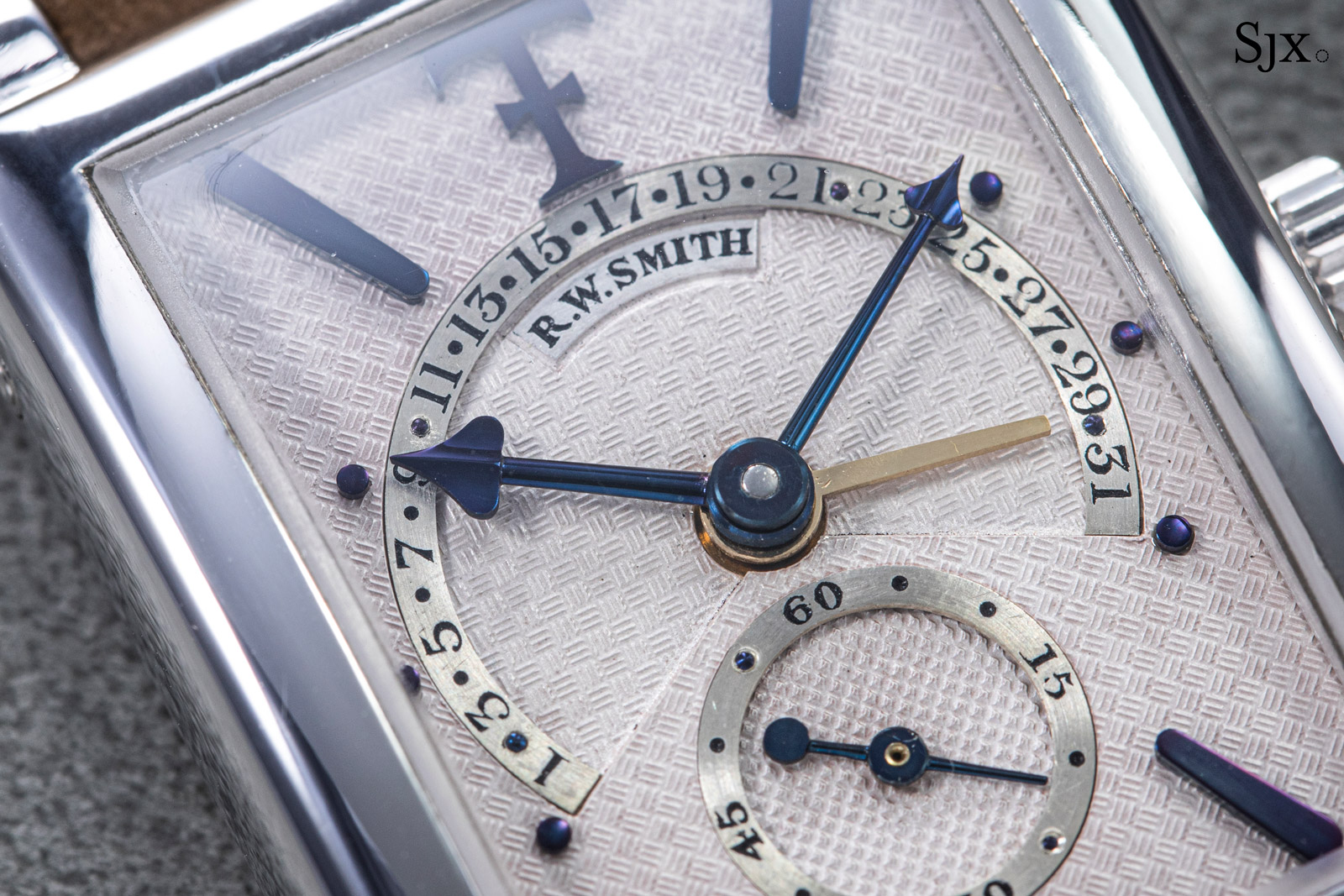
The hands are in Mr Smith’s distinctive style, which he continues to use today
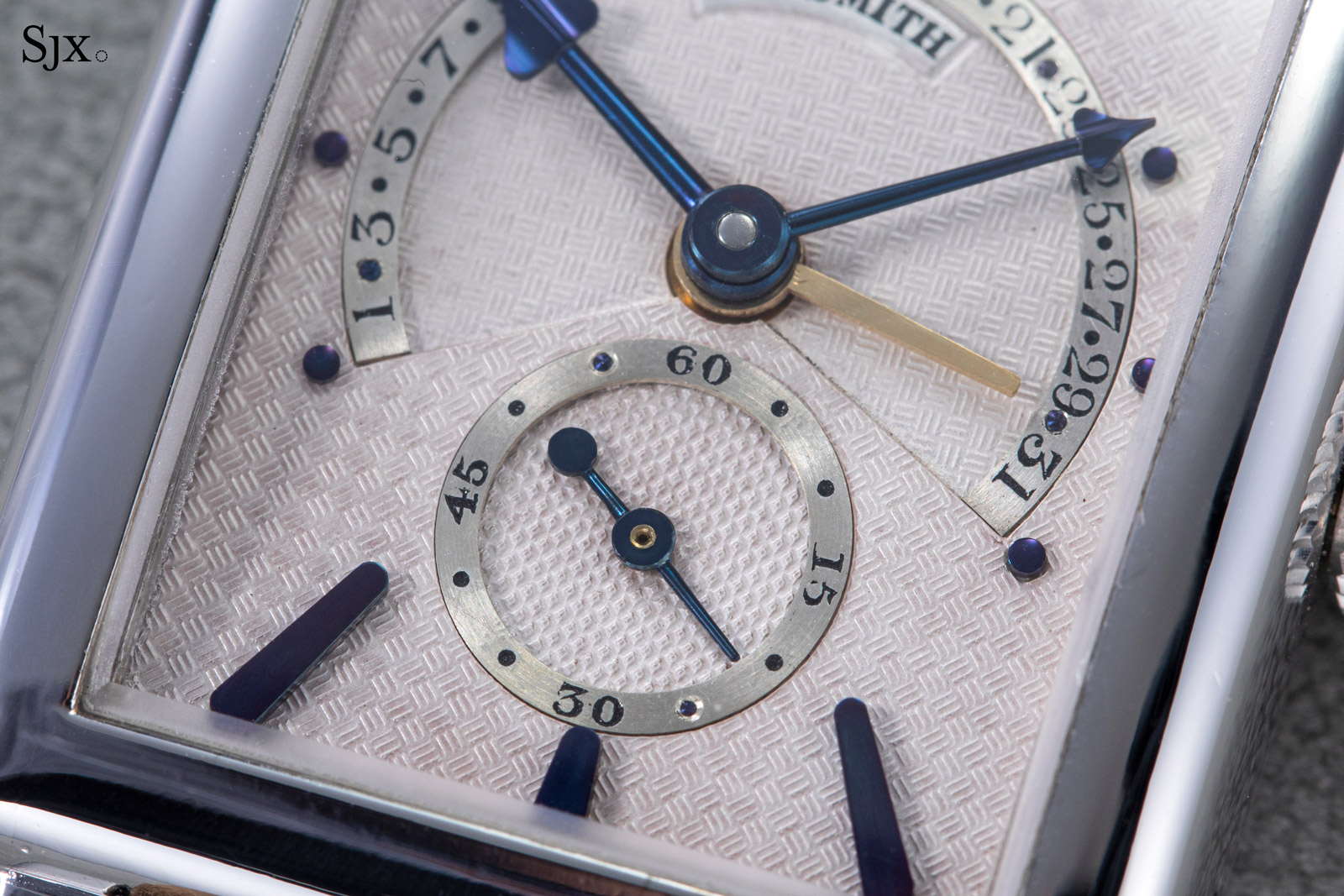
Several different guilloche are found on the dial
The movement within is a perfect fit for the case. According to Phillips, the young Mr Smith was impressed by the rectangular movement found in the A. Lange & Söhne, resulting in the unusual shape of the Series 1.
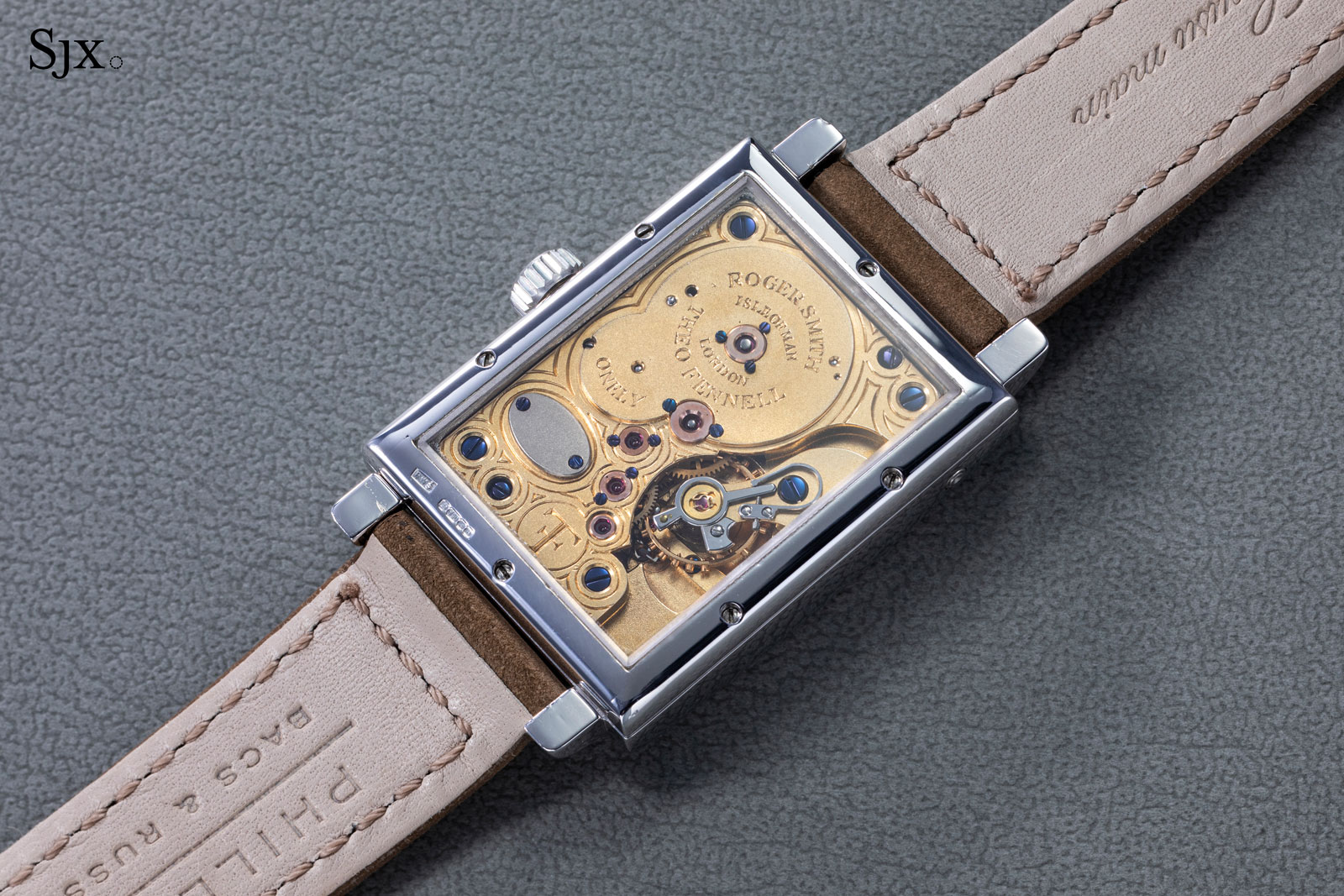
While the standard Series 1 movement has a frosted-gilt plate, the “Onely” Series 1 movements have elaborate engraving on the three-quarter plate. In fact, the plate is signed with the jeweller’s name and logo, along with the model name.
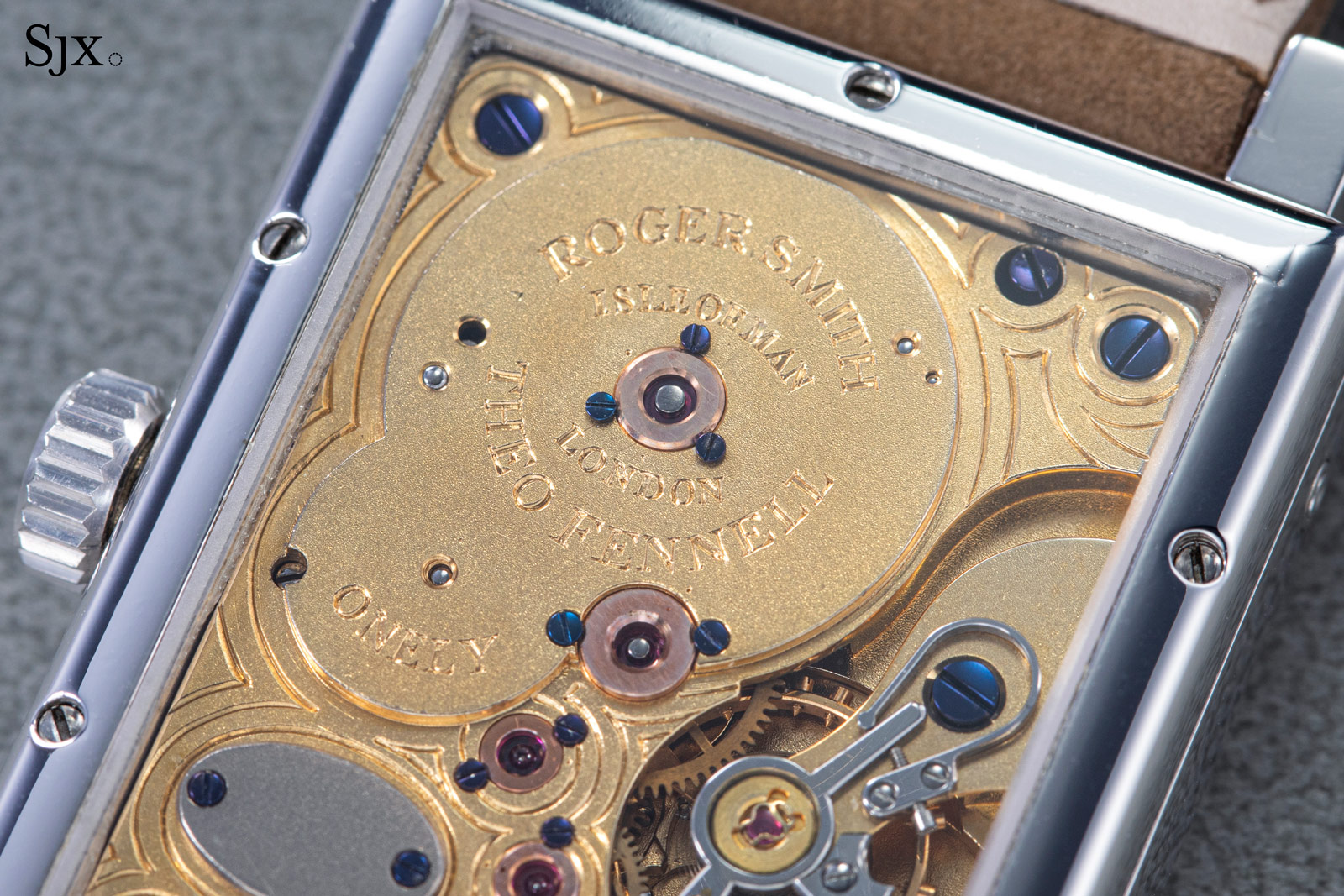
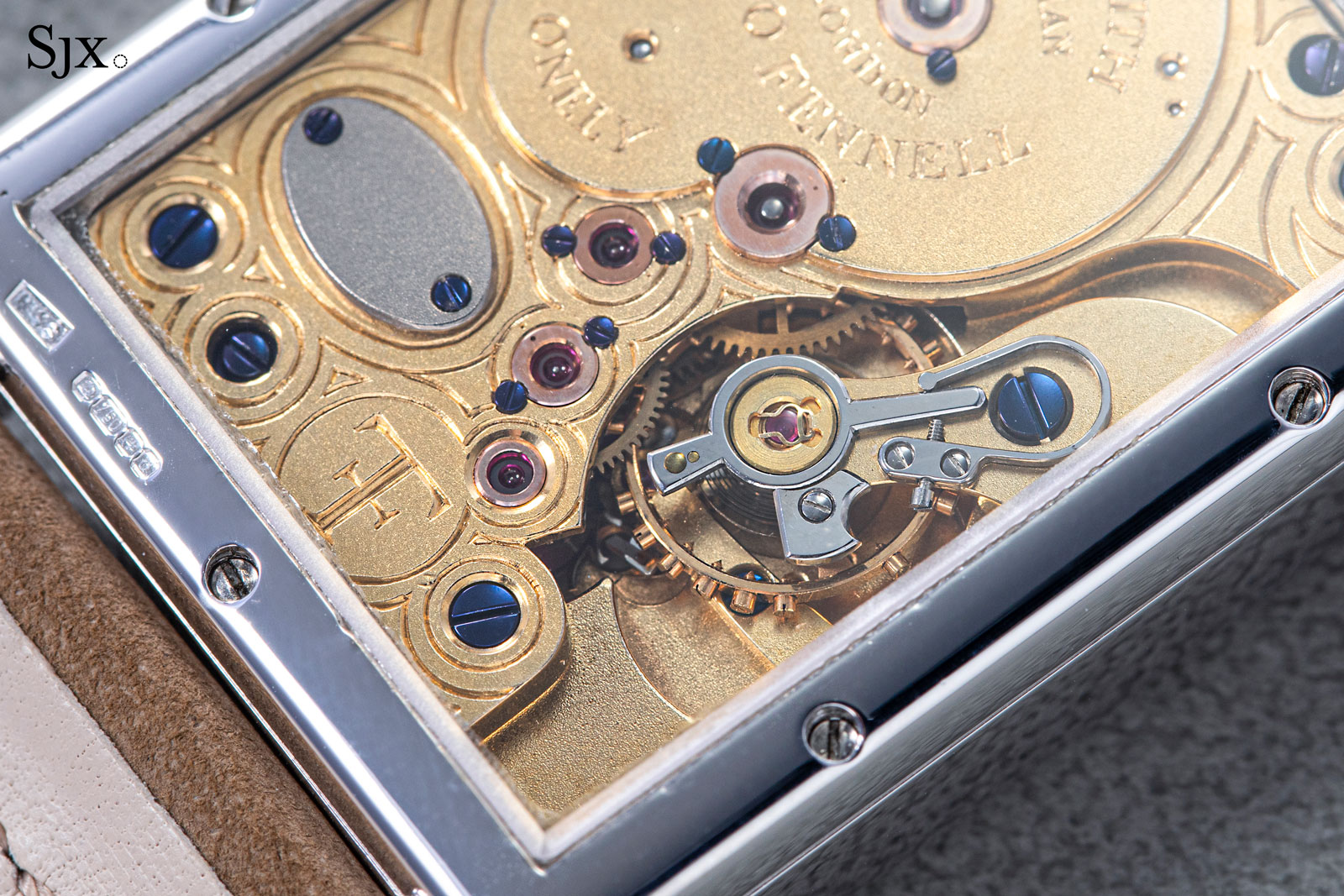
As with other early Roger W. Smith watches, this Series 1 lacks the refinement of his later work, but its significance in terms of his brand’s development means its desirability will not be reduced.
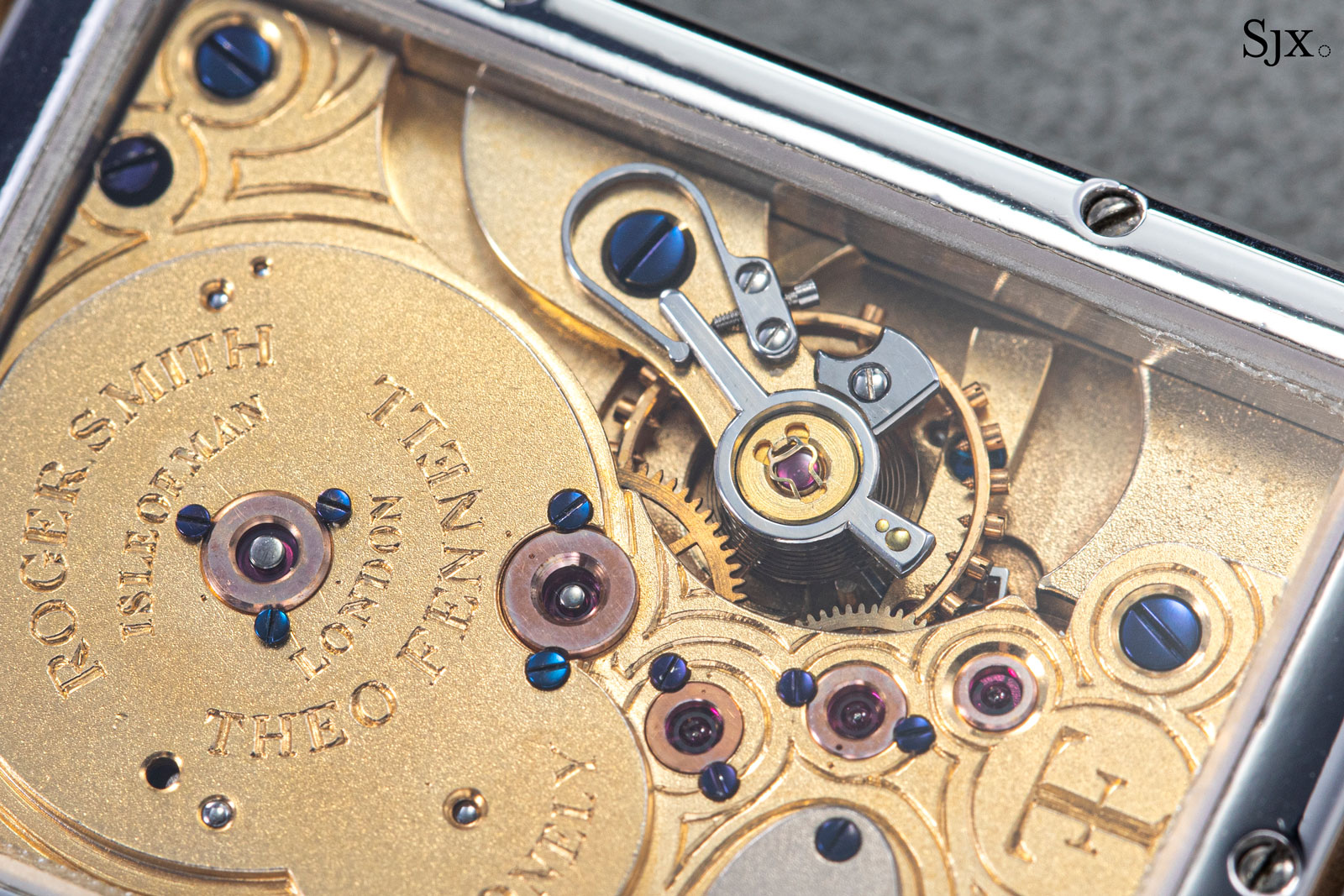
The Series 1 “Onely” has an estimate of CHF40,000-80,000, or US$43,800-87,600, a bargain compared to the retail prices of contemporary Roger W. Smith models. Full lot details here.
Lot 160 – Patek Philippe Calatrava ref. 570 in steel
Unlike the highlights above that are quirky in one way or another, this Calatrava ref. 570 is classically handsome. It has many of the elements that are fashionable in modern-day collecting, but it is a timeless design that is beautiful.
And importantly, it is a ref. 570. Extremely large for its time – the present example dates to 1942 but is 37 mm wide – the ref. 570 is a good enough size even by today’s standards.
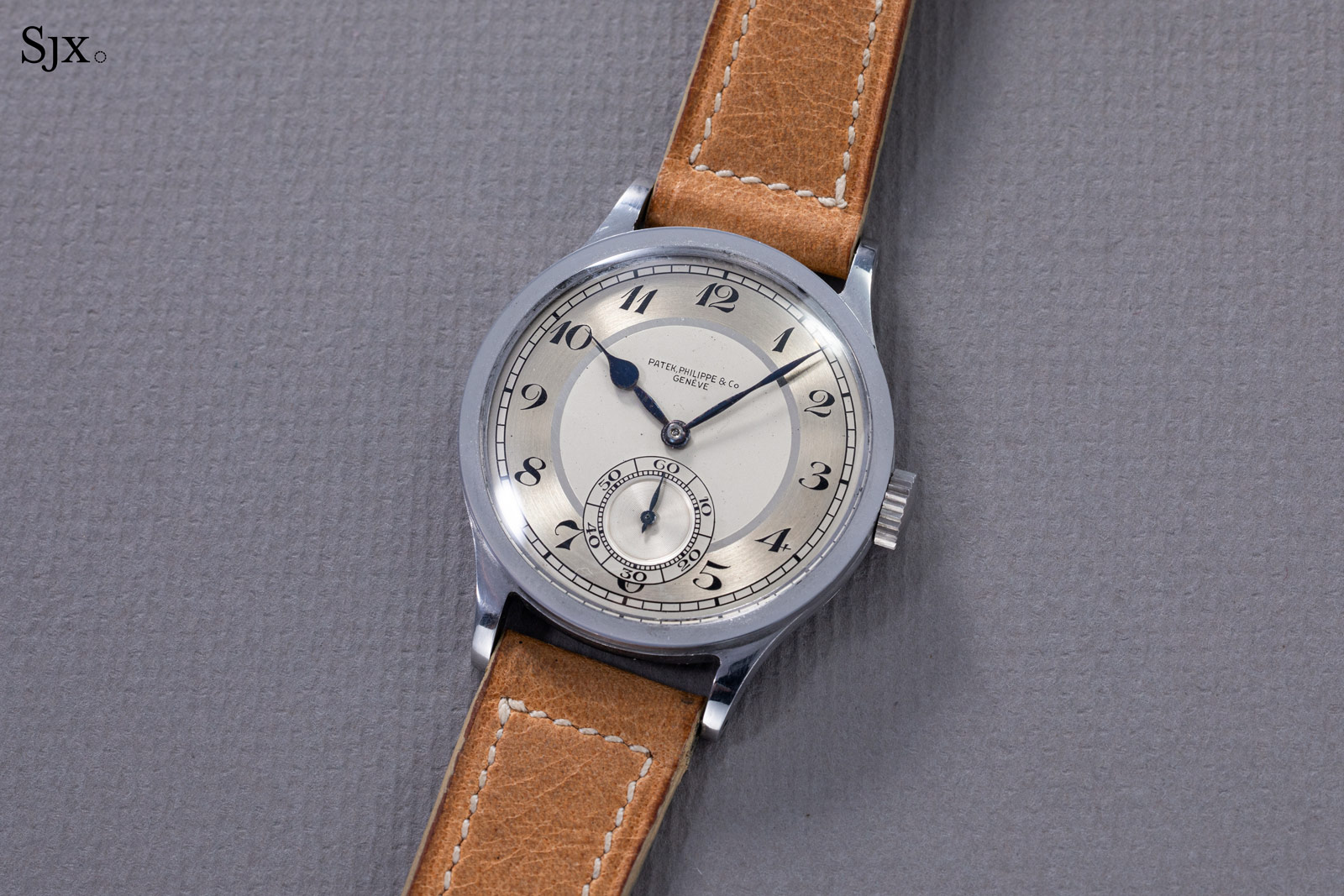
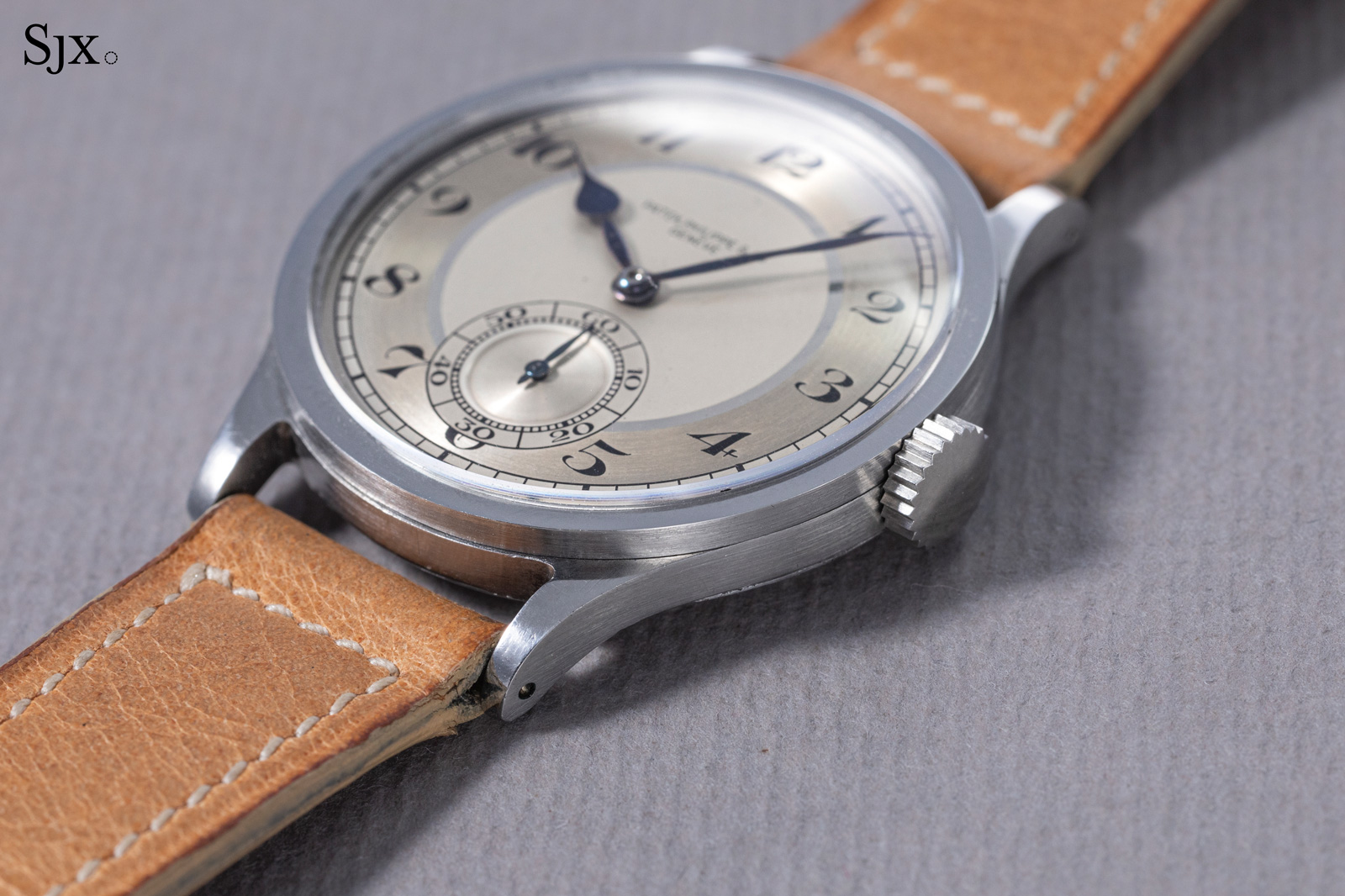
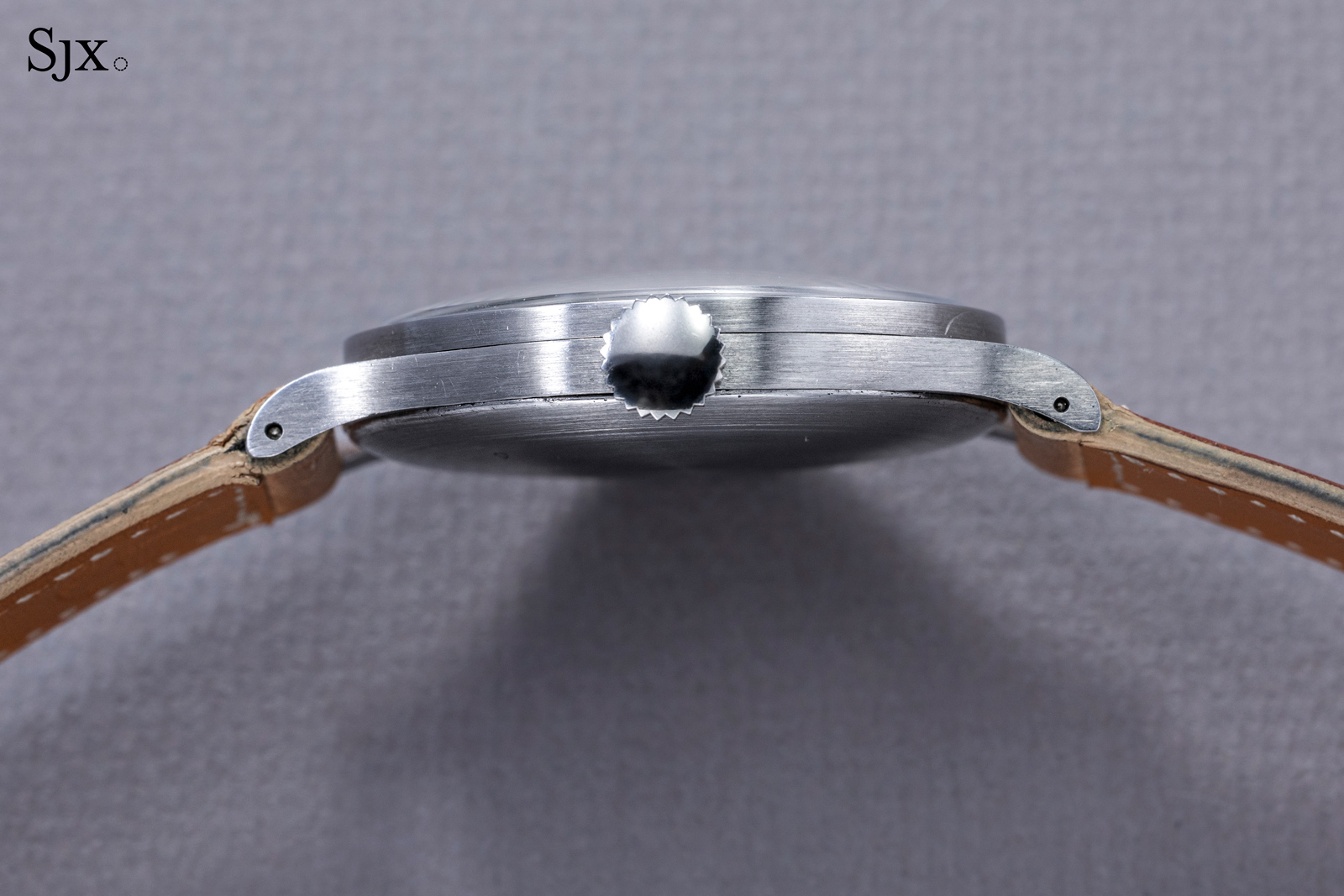
The thin, sharply-preserved steel case
The present example is especially fetching because of its two-tone dial with Breguet numerals and spade hands. Perfectly proportioned in every respect, the dial is a perfect example of tasteful mid century style.
Though the design is simple, the details and executions are thoughtful. The two-tone finish is derived from the circular brushing on the chapter ring, while the dial markings, including the Breguet numerals, are in champleve enamel. That means the dial was first engraved with markings that were then filled with enamel and fired.
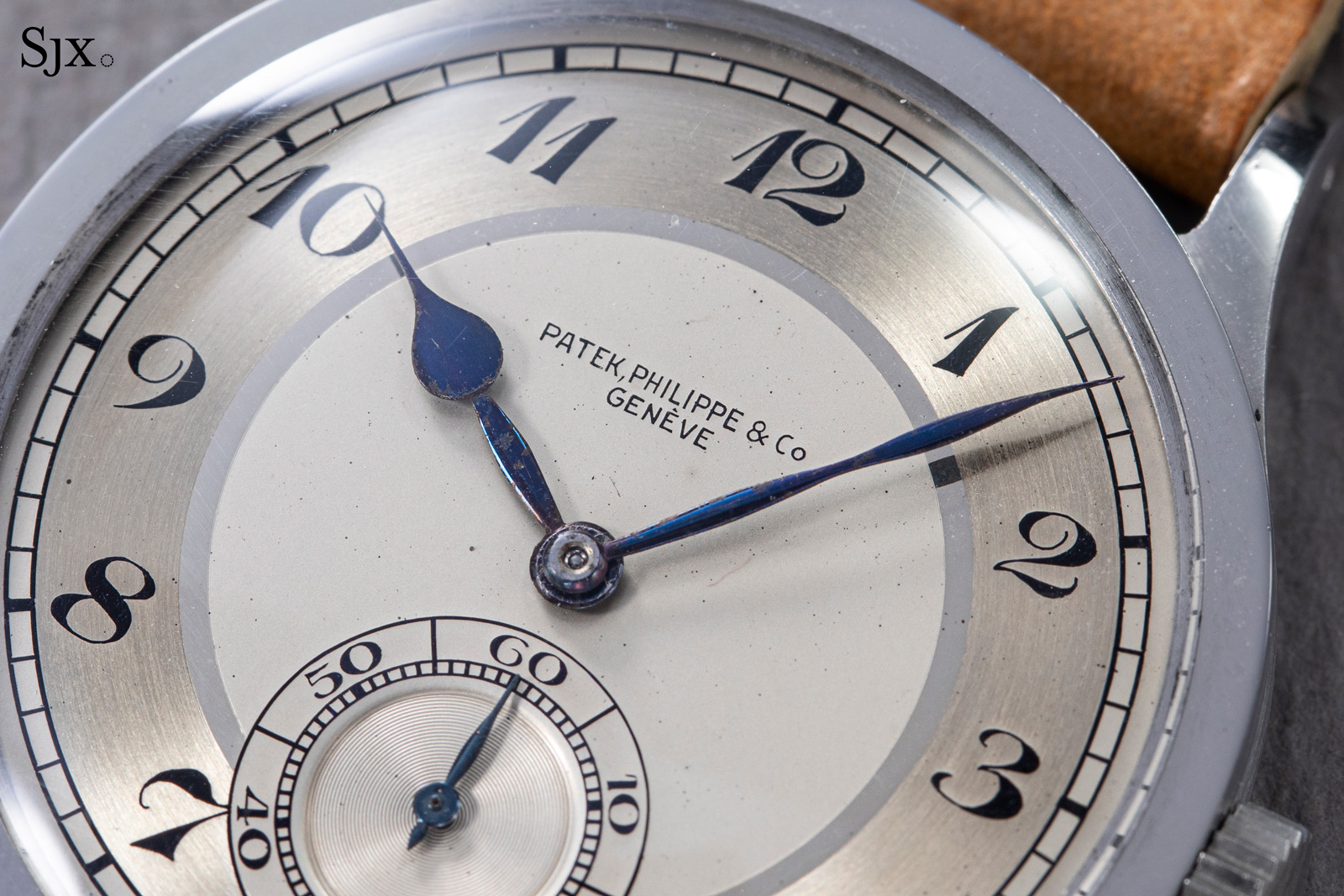
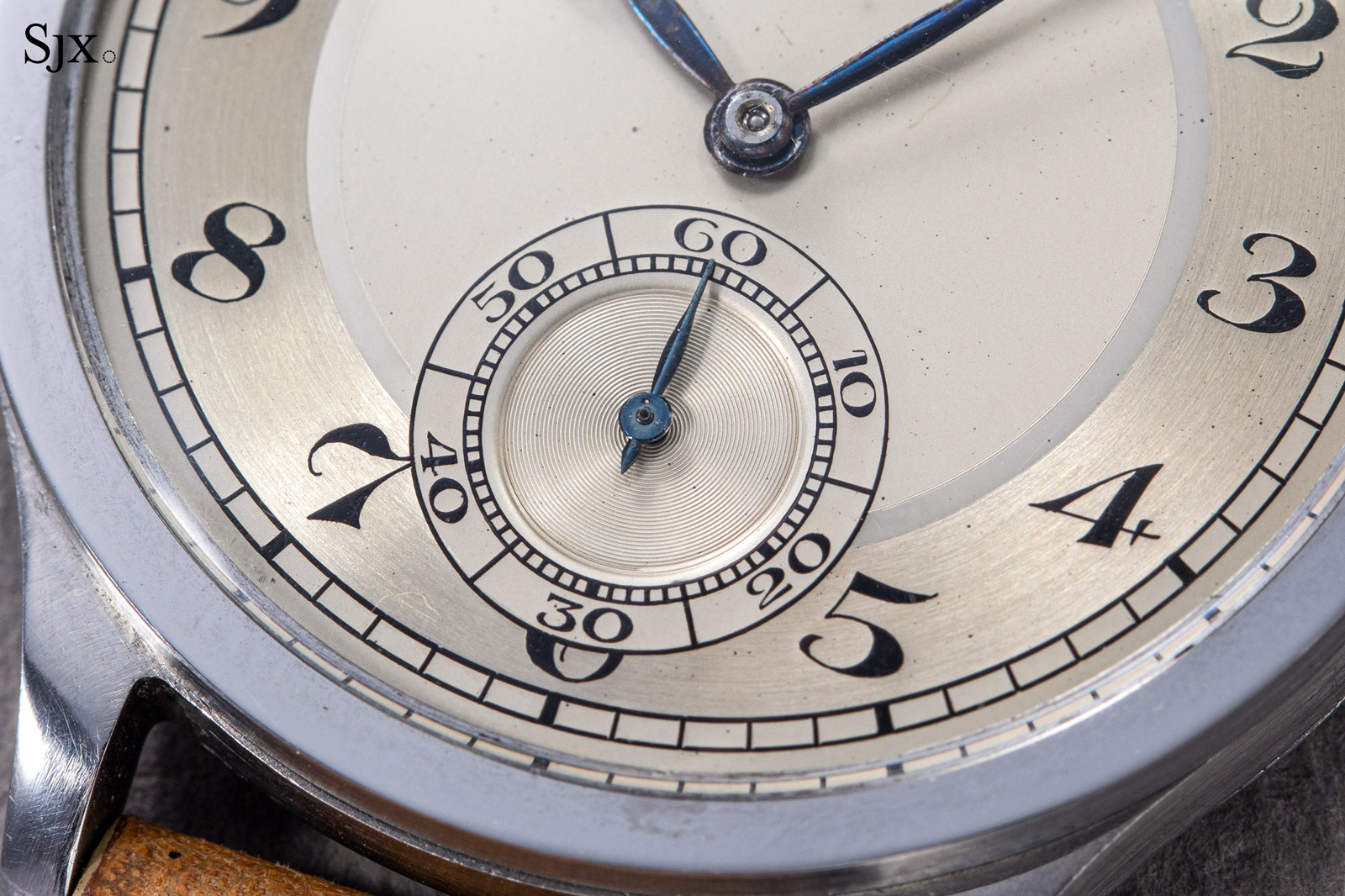
Accompanied by an extract from the archives that describes the dial, the ref. 570 has an estimate of CHF200,000-400,000, or US$218,000-436,000. Full lot details here.
Auction details
The auction takes place at 2 pm on both May 8 (lots 1-130) and May 9 (lots 131-236), at its traditional venue of La Réserve.
Hôtel La Réserve
301, route de Lausanne
1293 Bellevue, Geneva
Switzerland
For the full catalogue, as well as appointments and online bidding, visit Phillips.com.
Back to top.

